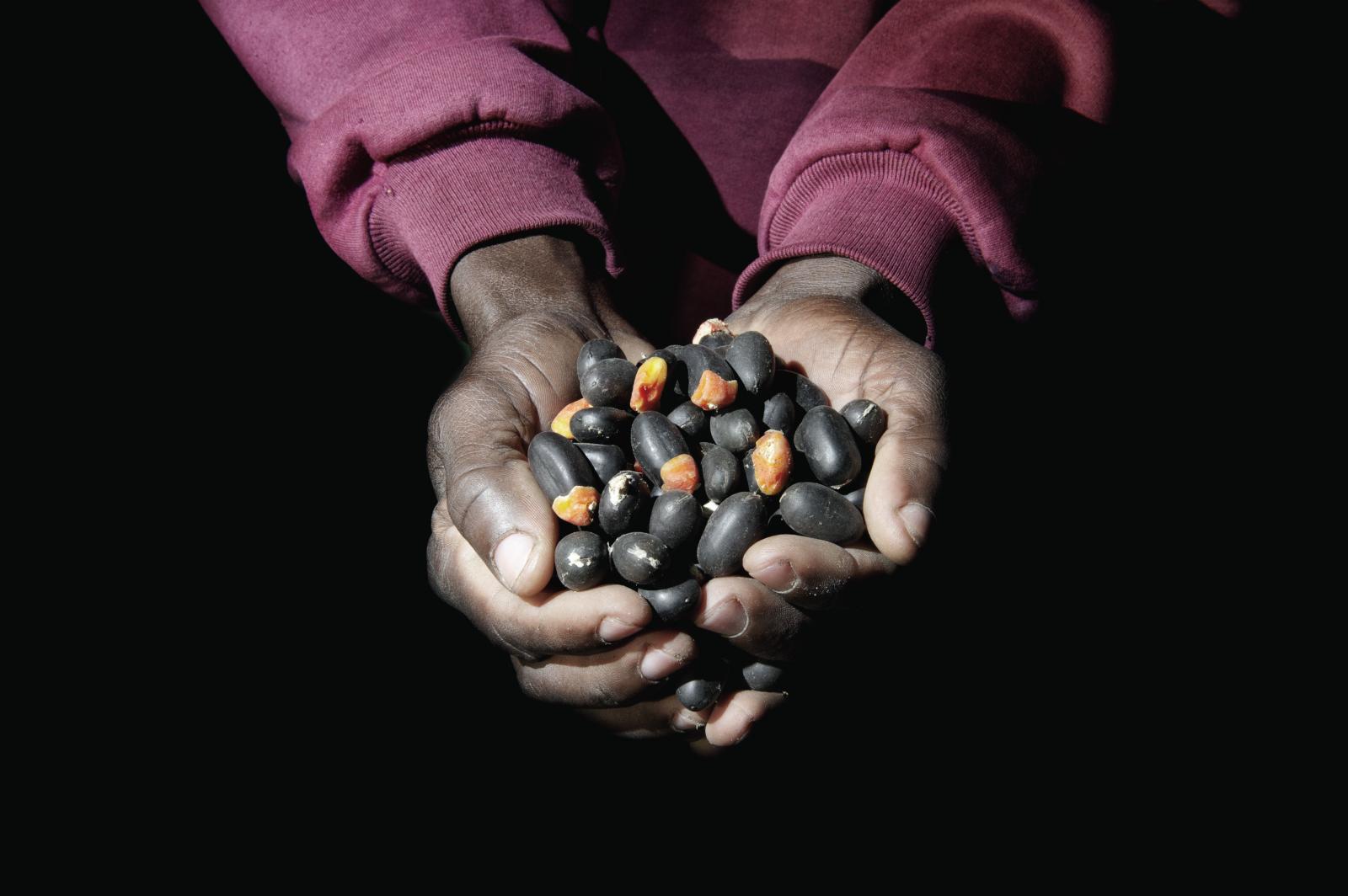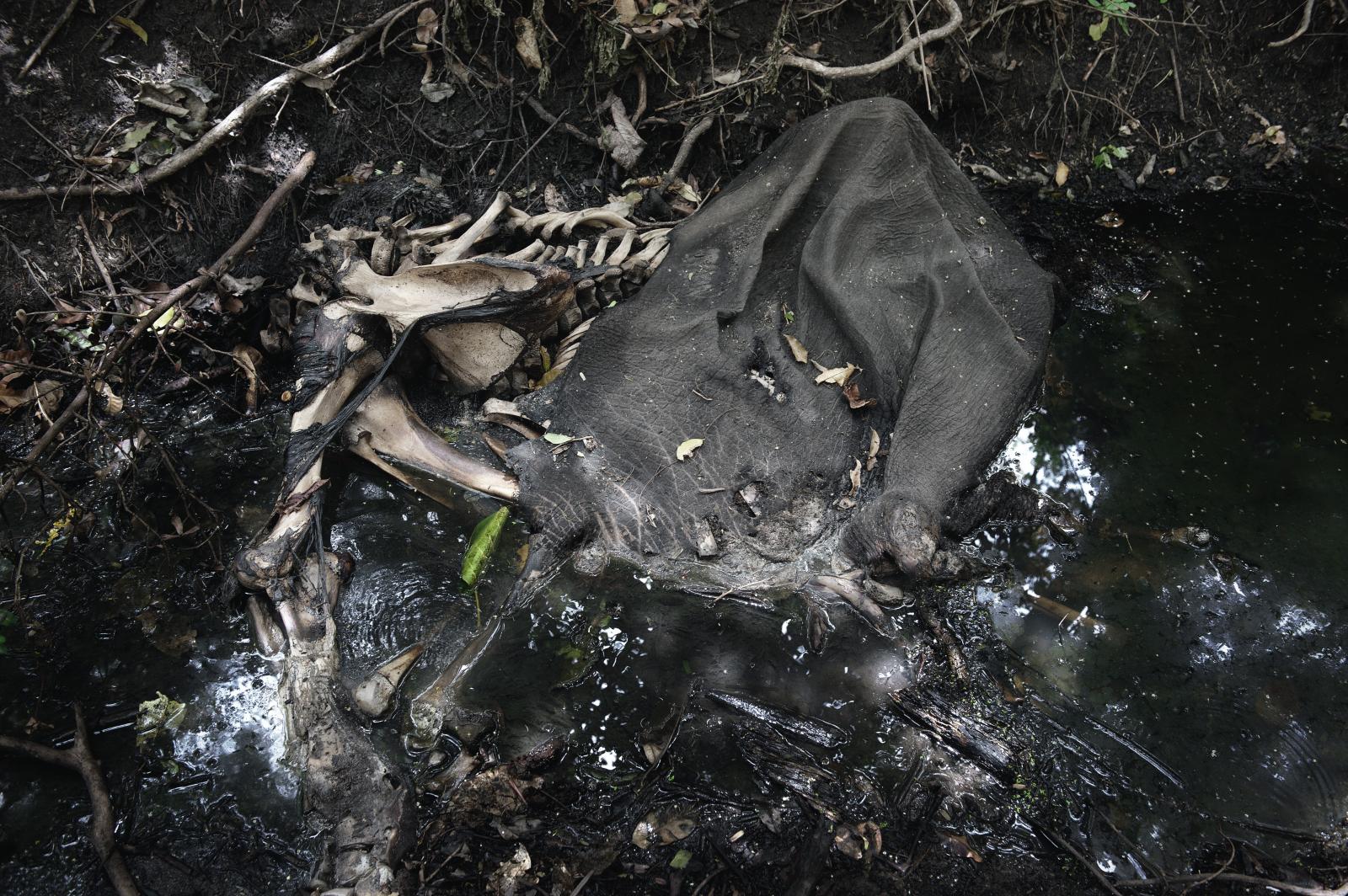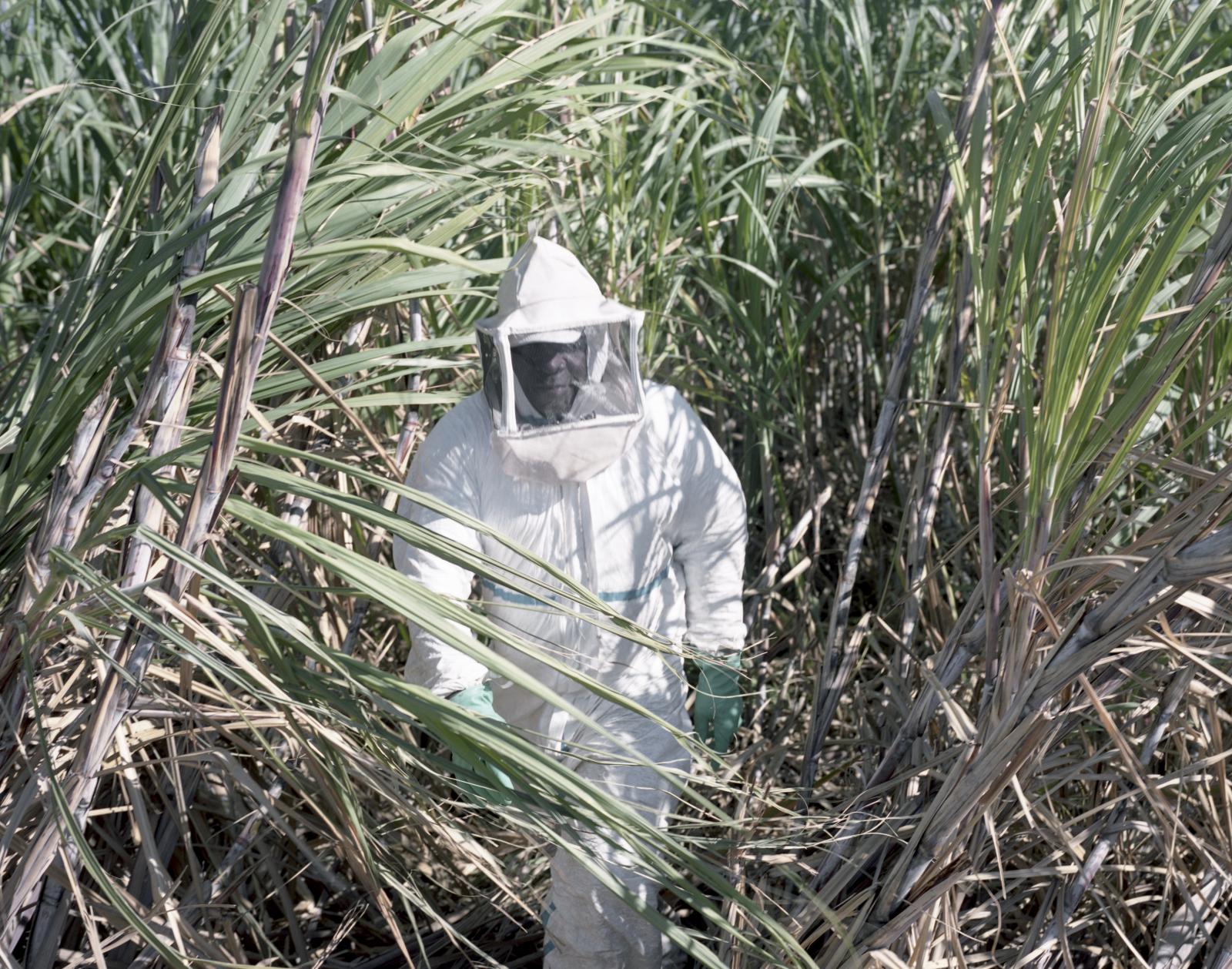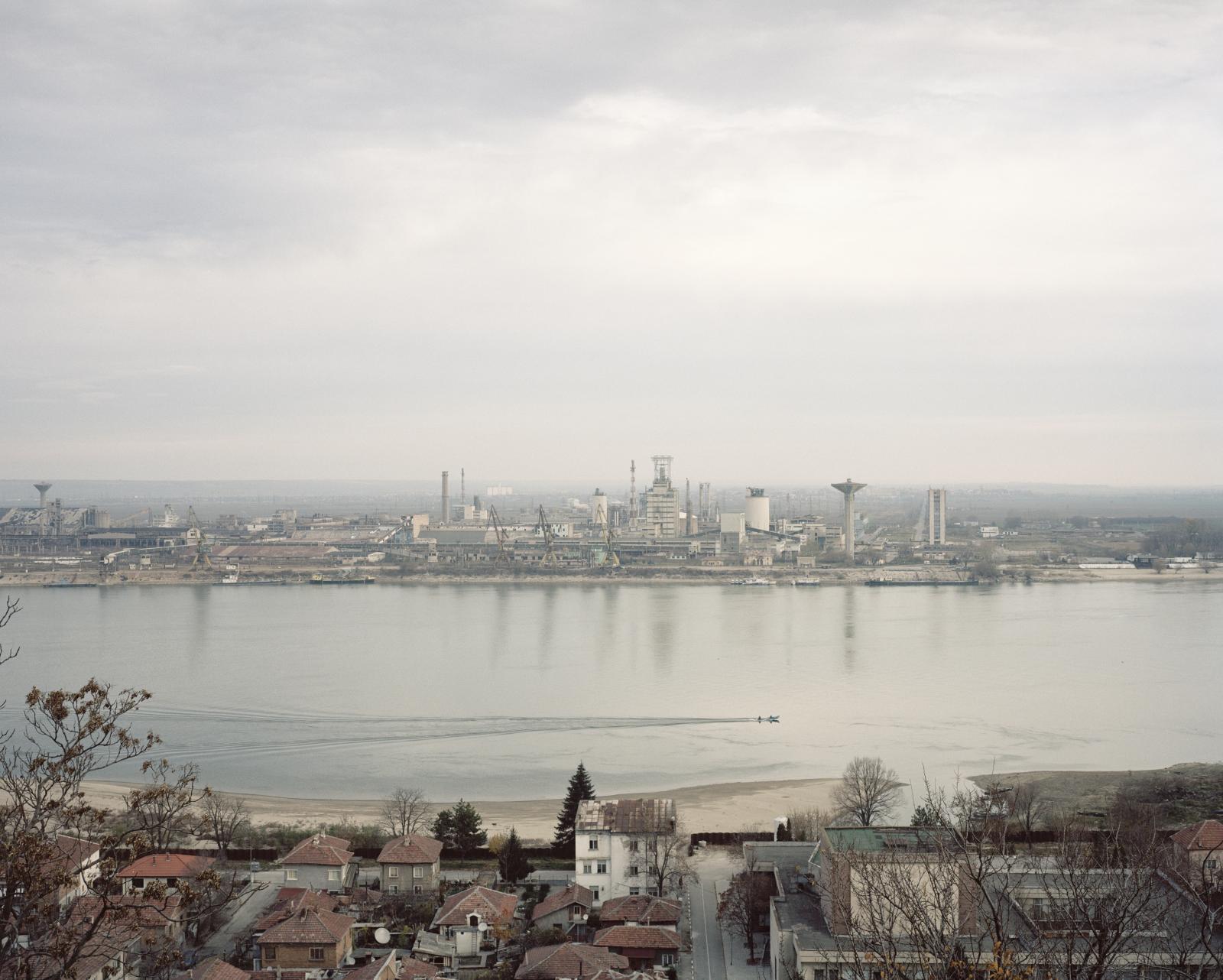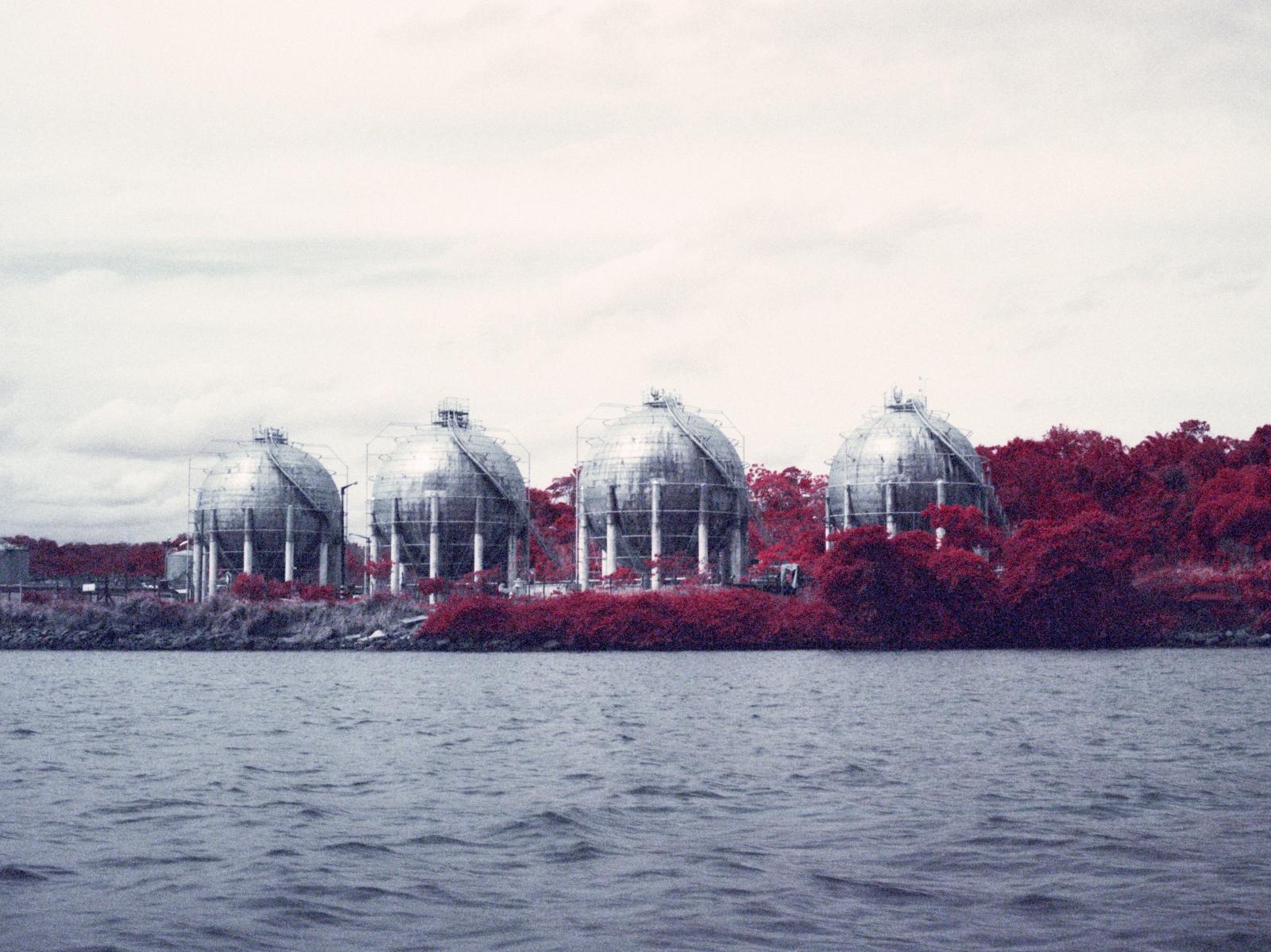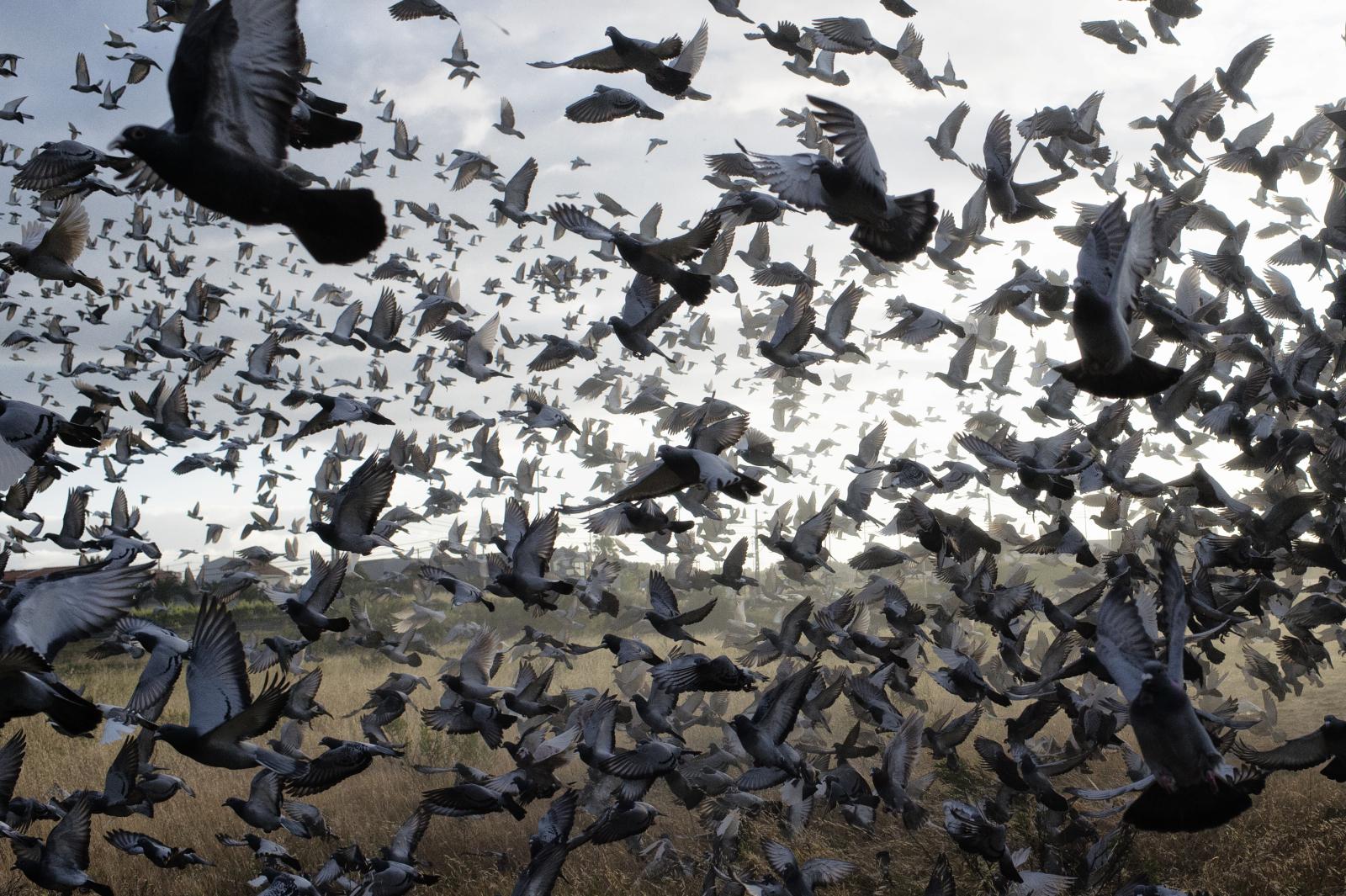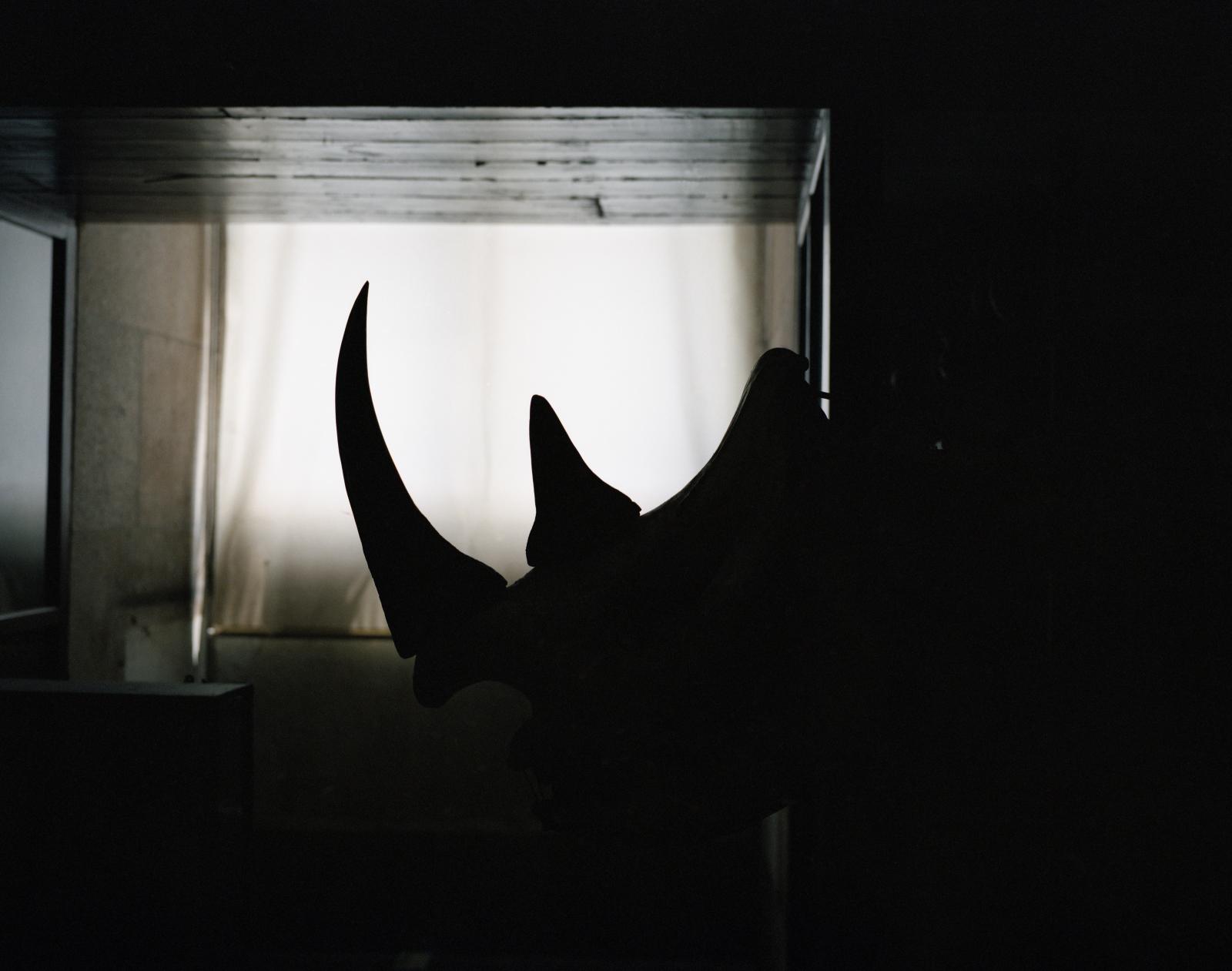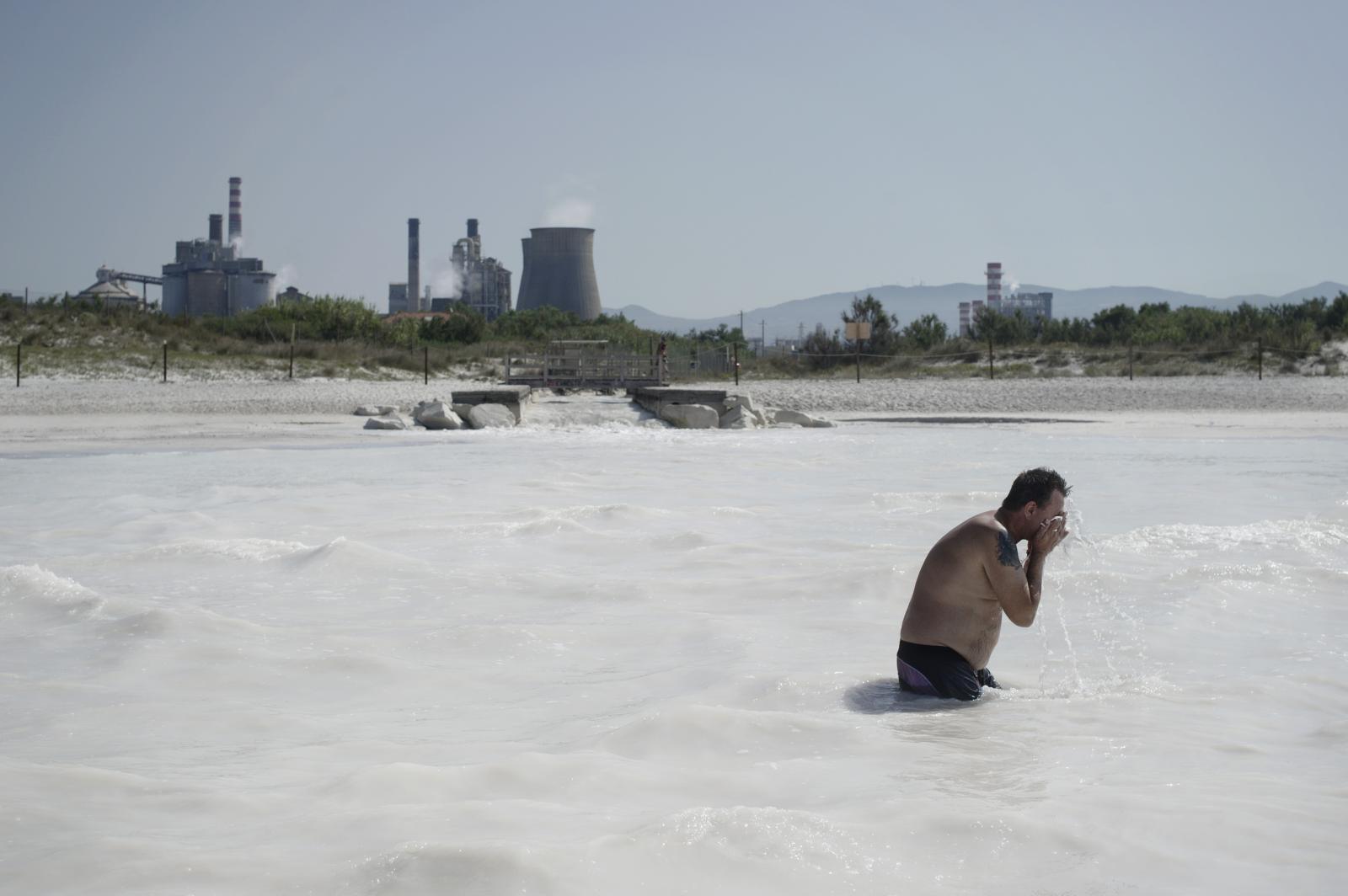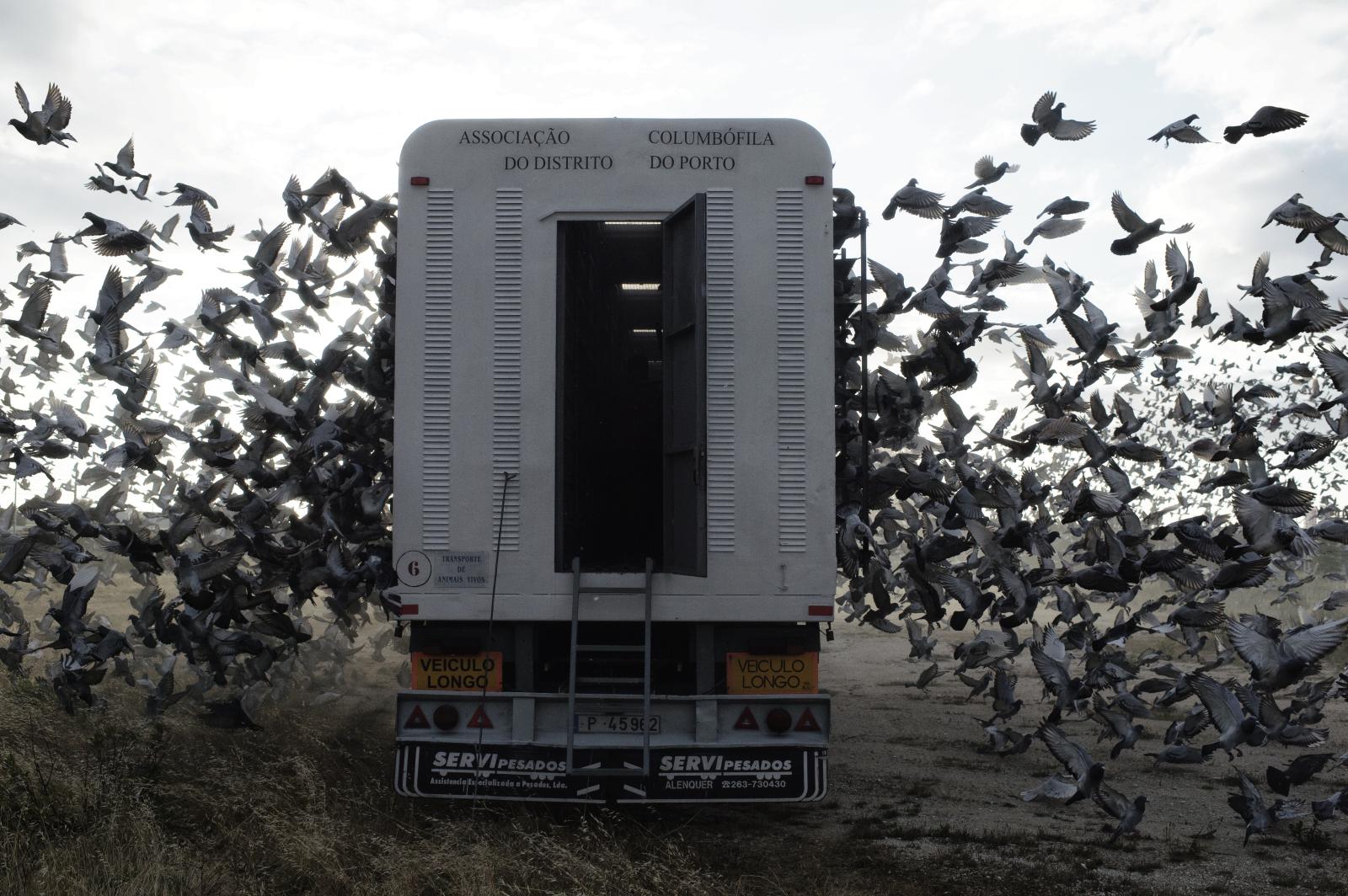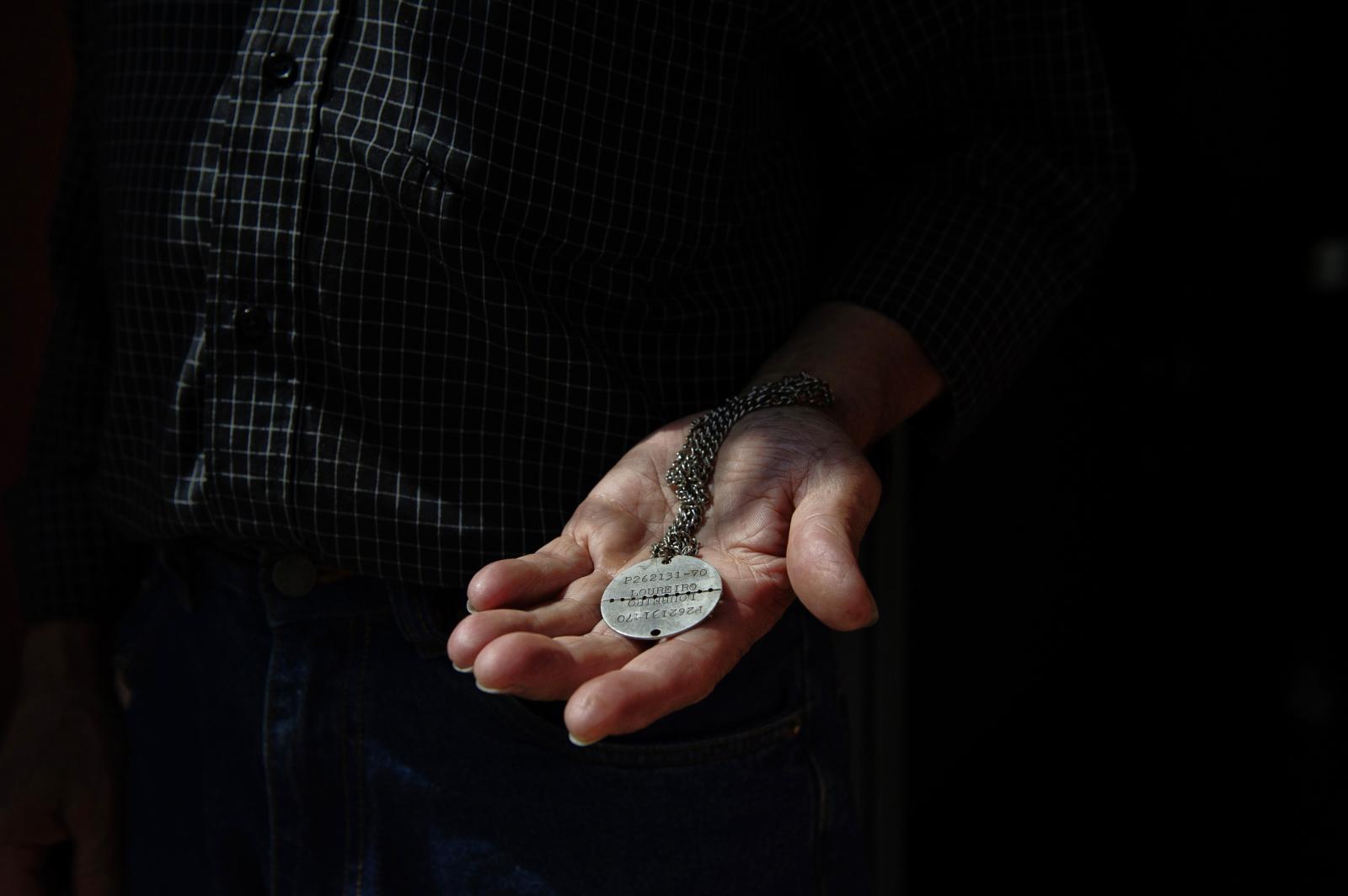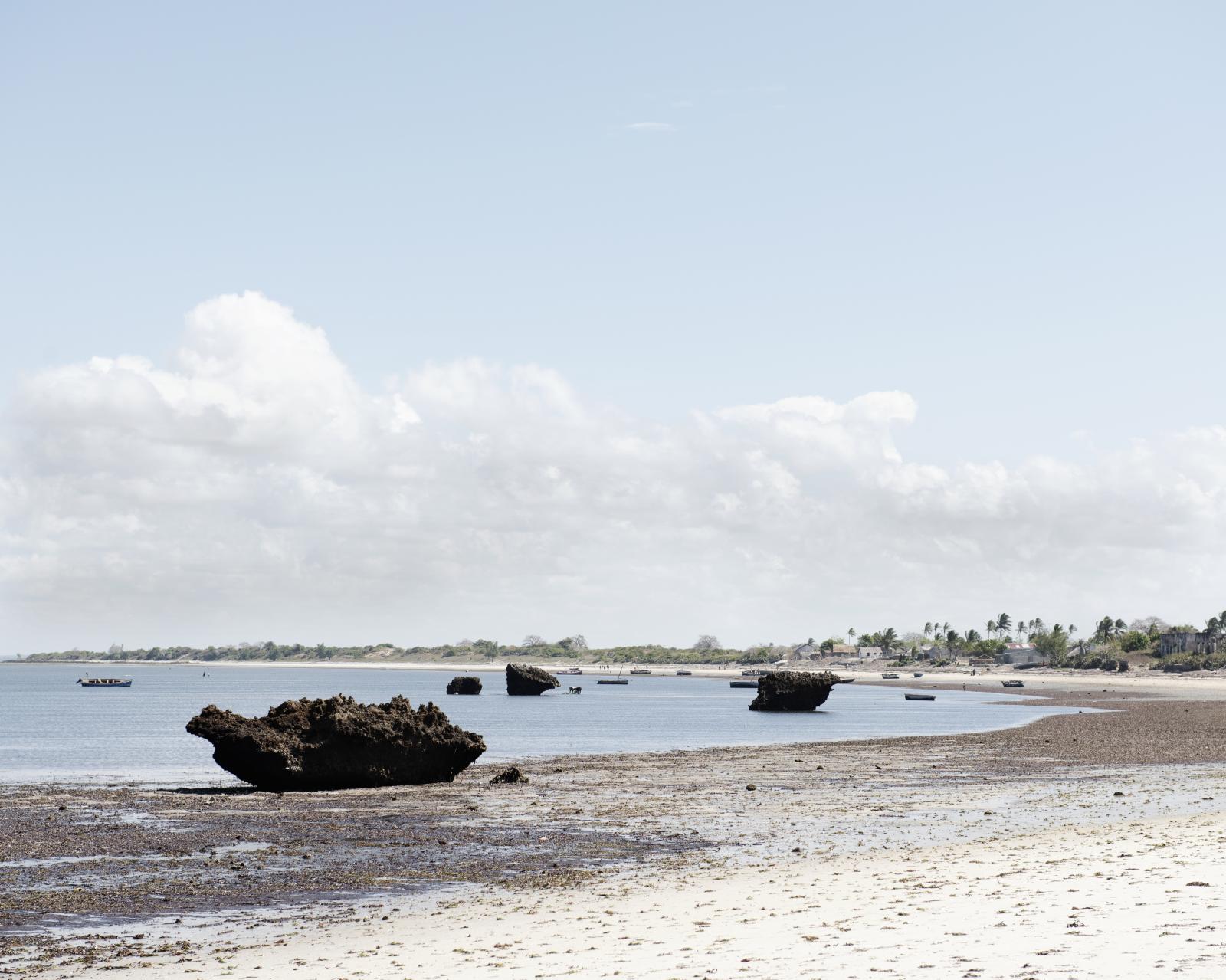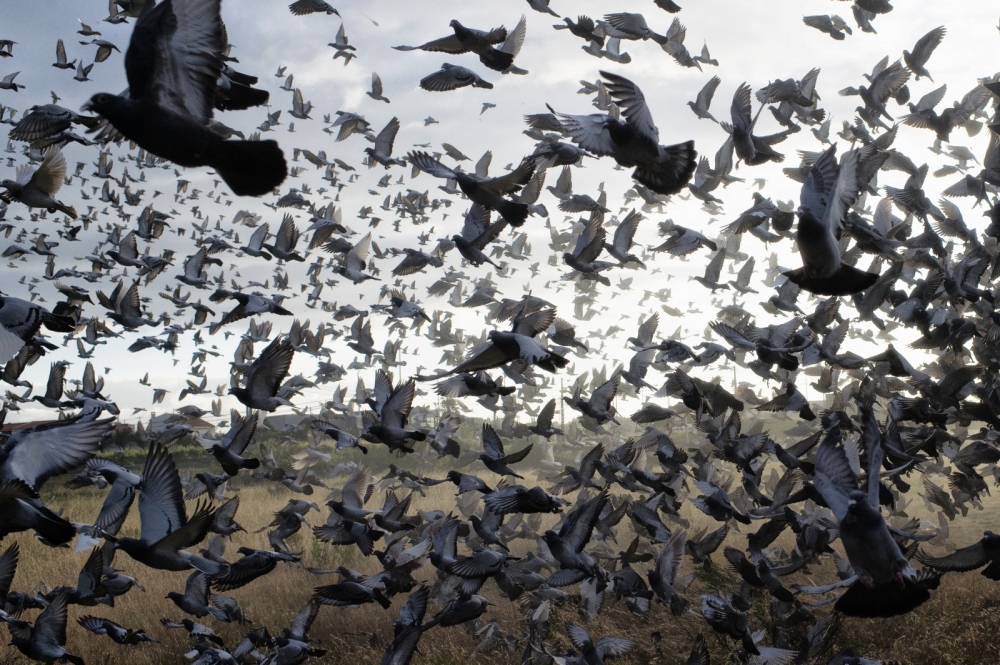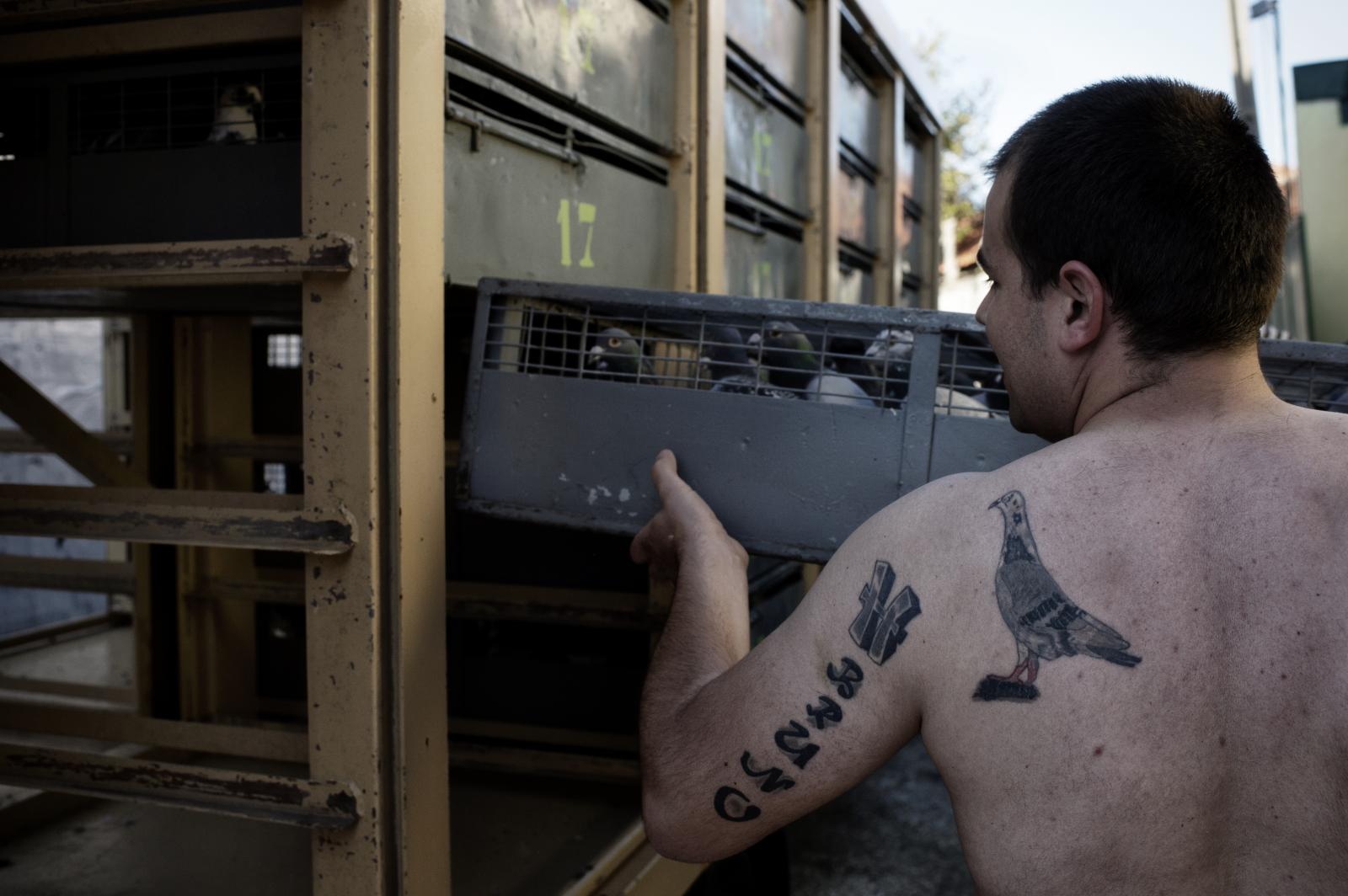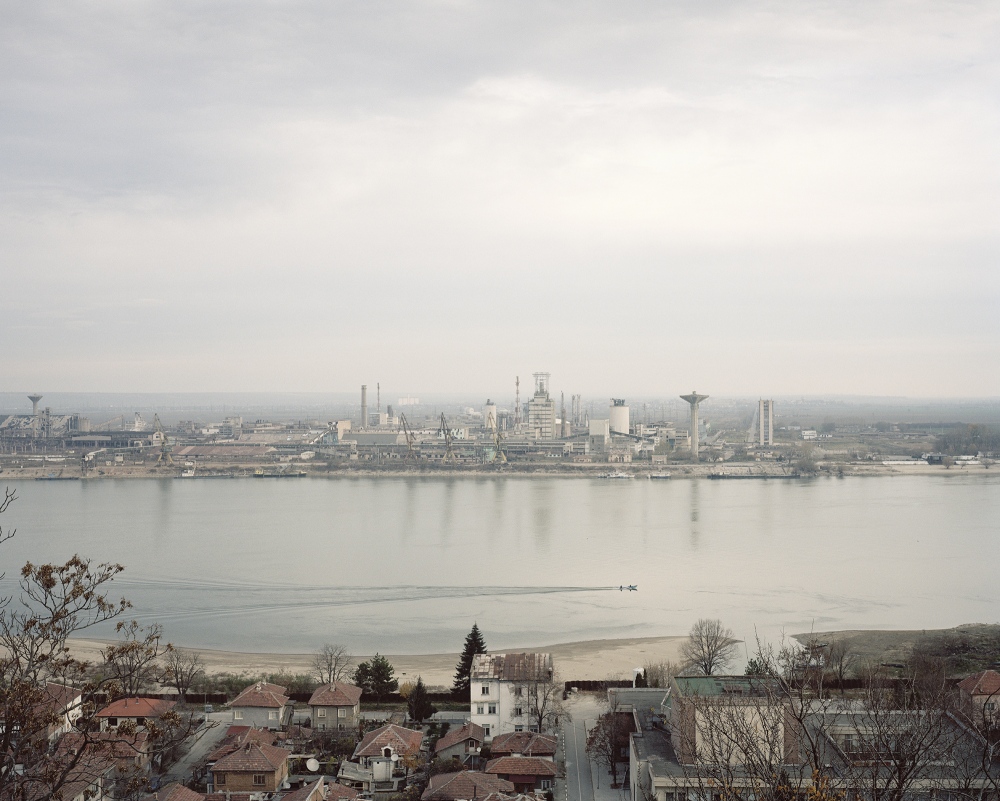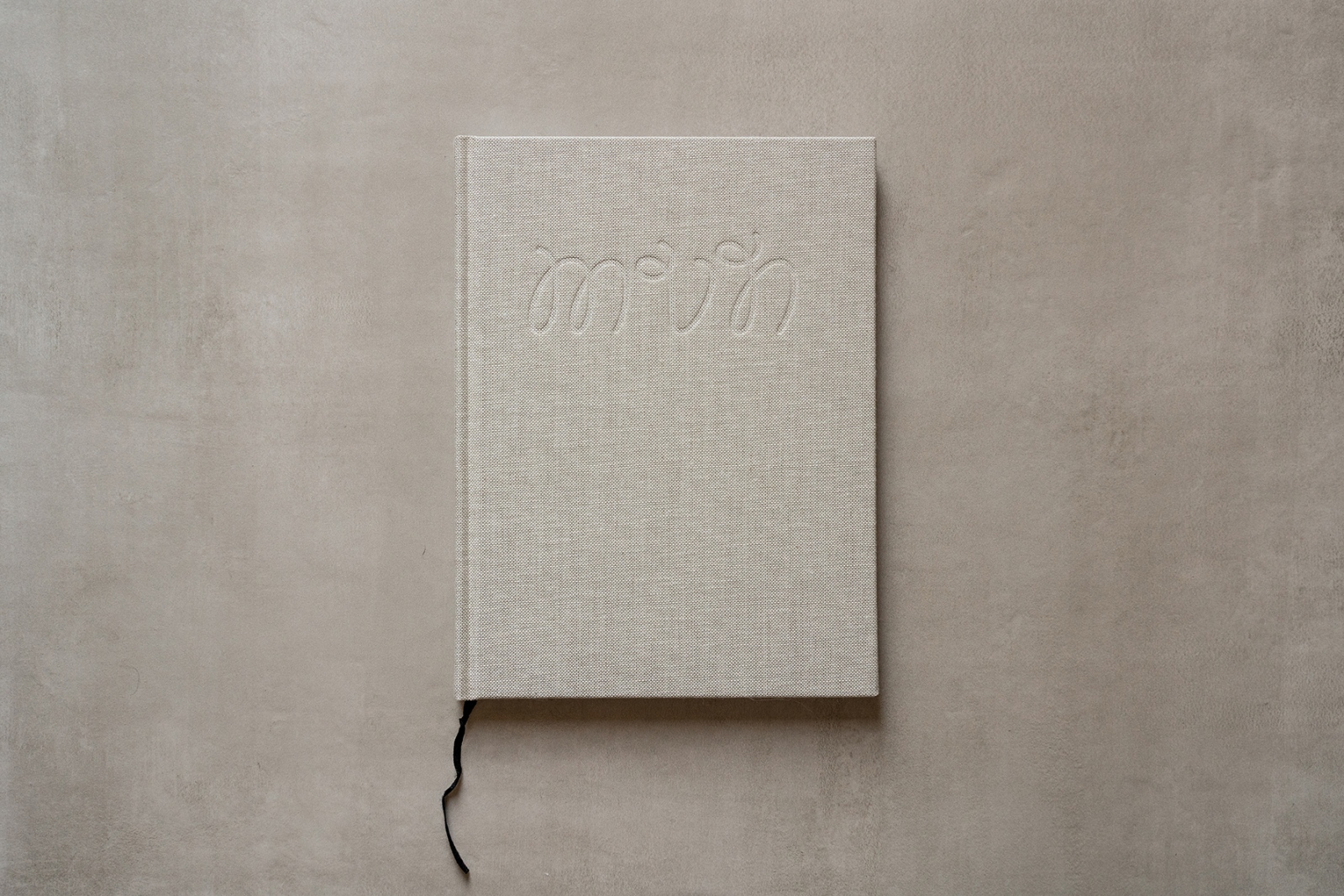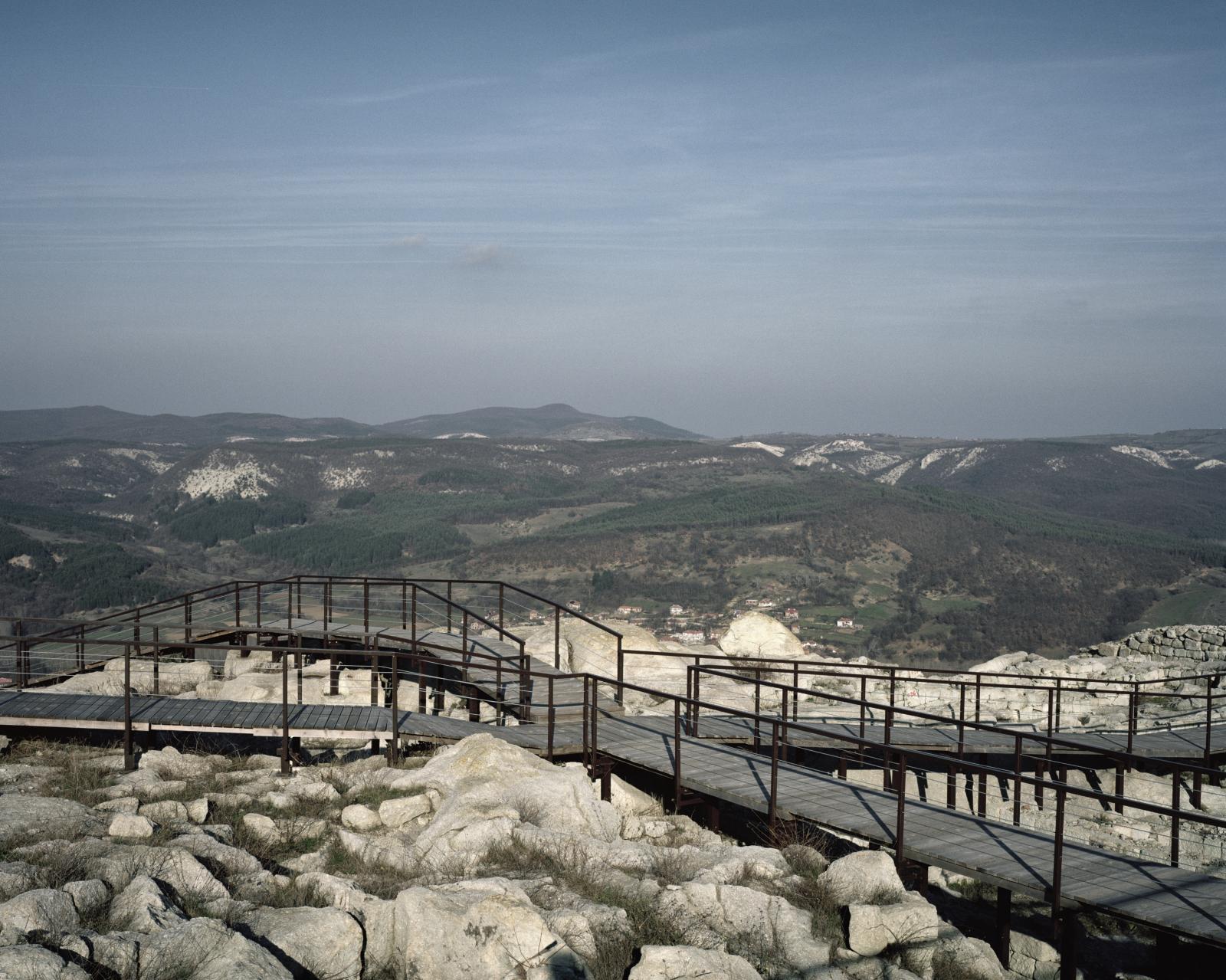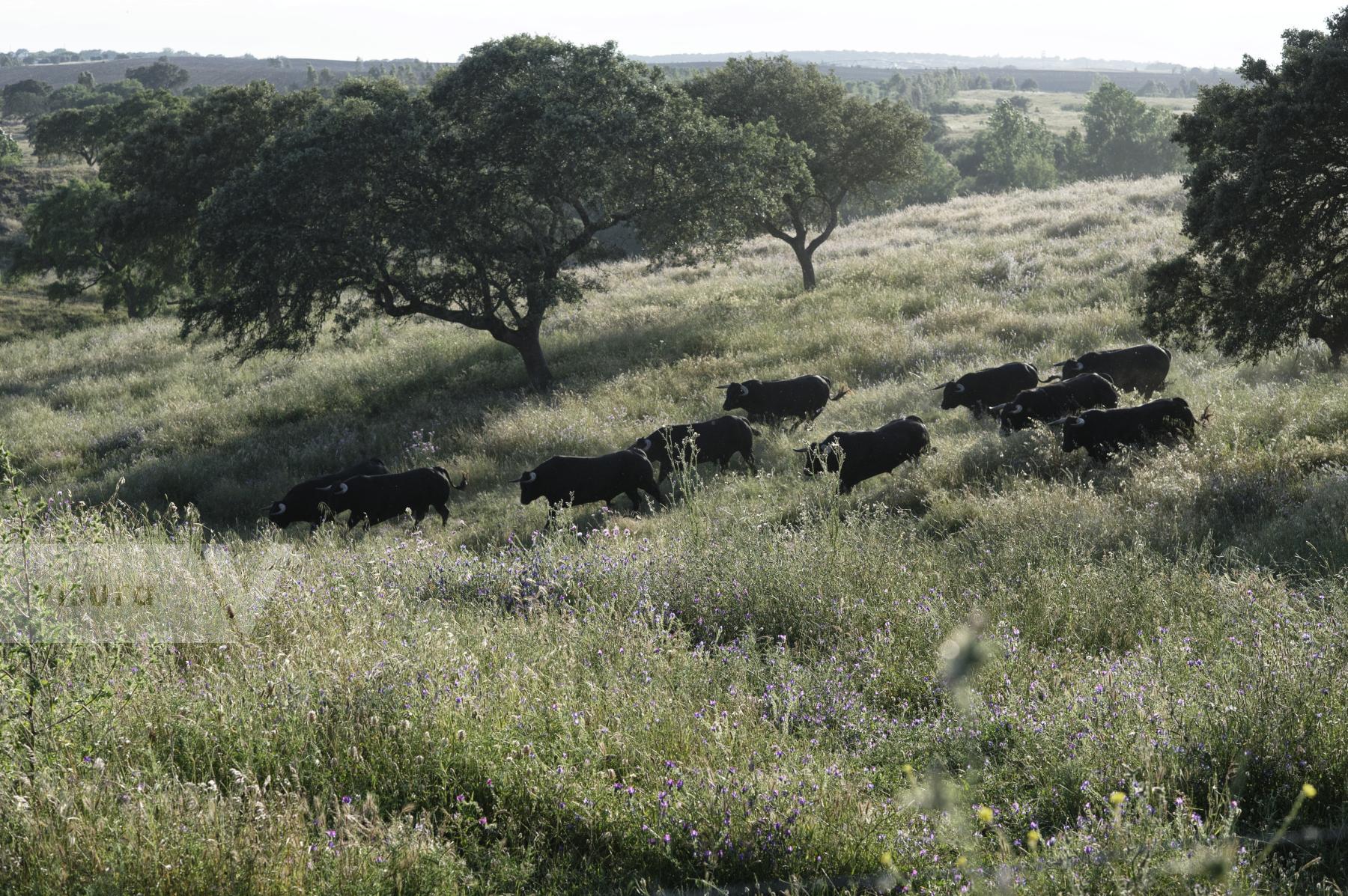
Montemor, Herdade do Pedrogão. Mr Antonio da Viega Teixera, the Portuguese noble that owner of the herdade, breed the wild bulls in the Herdade do Pedrogão. In the picture, wild bulls run away from the worker that are trying to catch them for a corrida. The herdades are mainly large rural estates still very often still owns by Portuguese nobility. Montemor Portugal
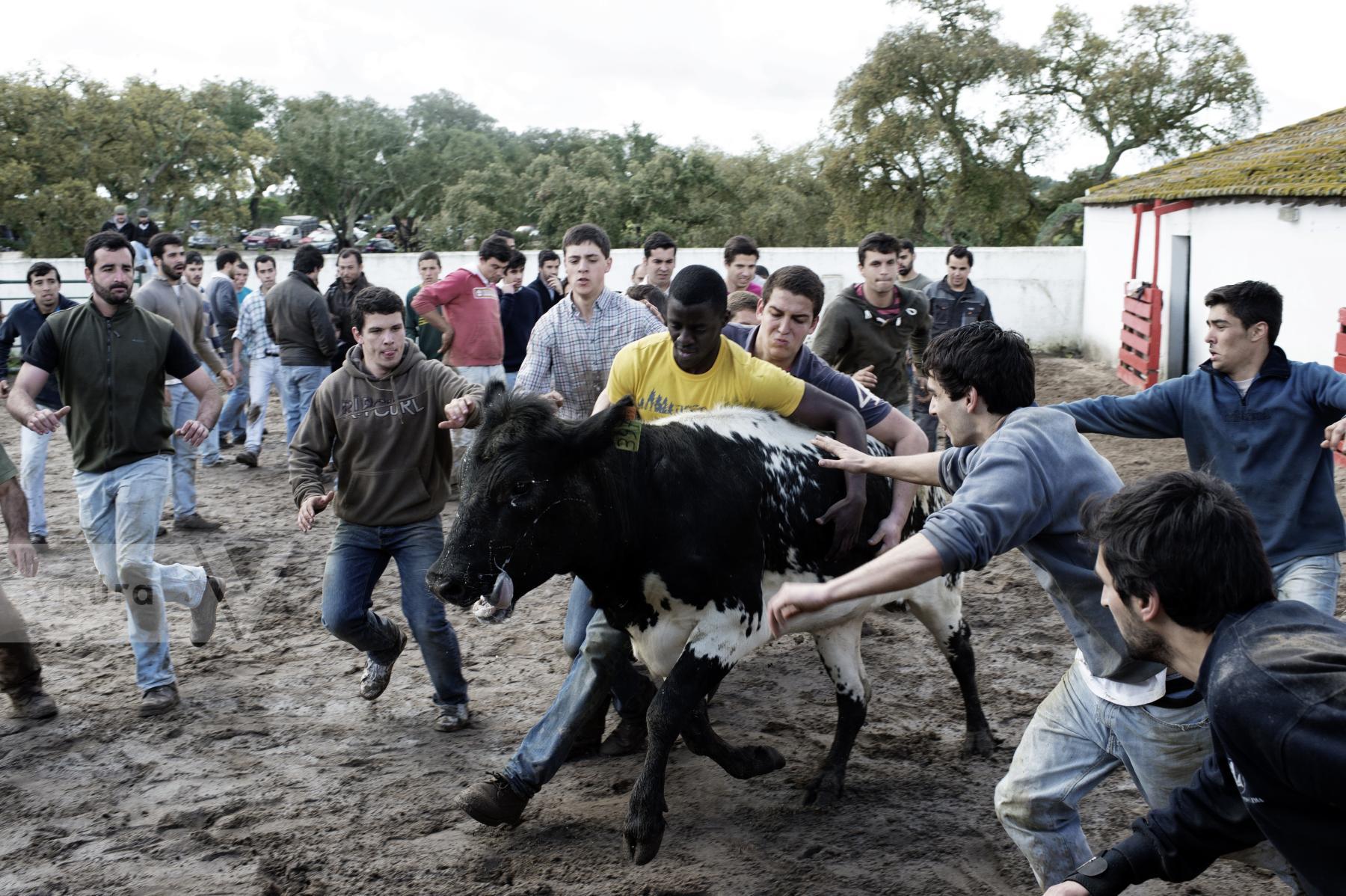
Malhada Alta. During a private party of the forcados of Santarem a group of young boy catch some cow that will be branded by fire. This activity help the owner of the cow to brand the animals and at the same time is a test for the boys that would like to enter in the forcados group. In these events young boys are introduced to bullfight showing their abilities to professionals. In the Portuguese corrida, forcados are a group of eight men, challenge the bull directly and without weapon of defence or protection. Malhada Alta Portugal
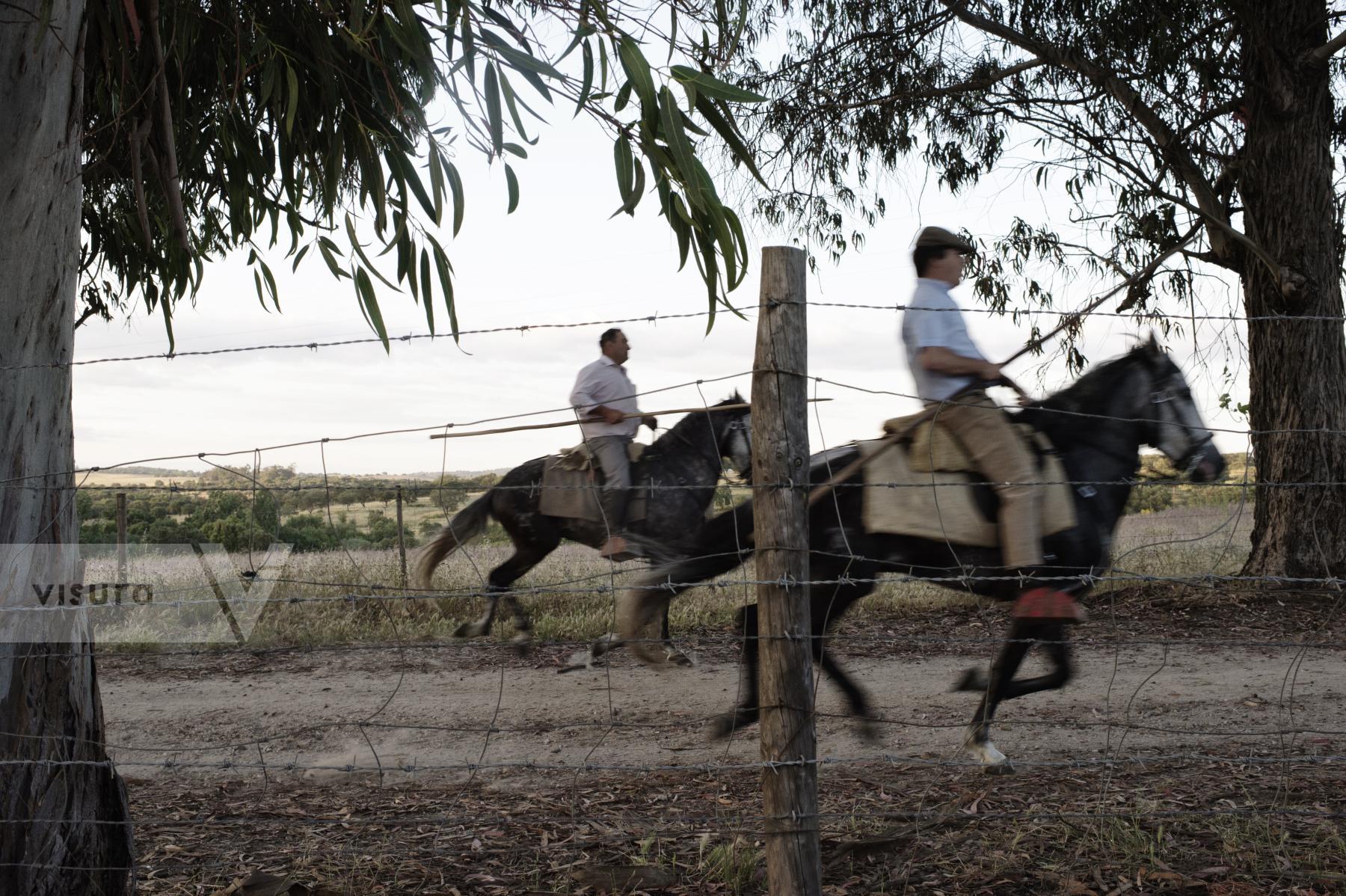
Montemor, Herdade do Pedrogão. The main farmer of the Herdade and the son of Mr Antonio da Viega Teixera run after some wild bulls that will be used in a Portuguese Corrida. The herdades are mainly large rural estates still very often still owns by Portuguese nobility. Montemor Portugal
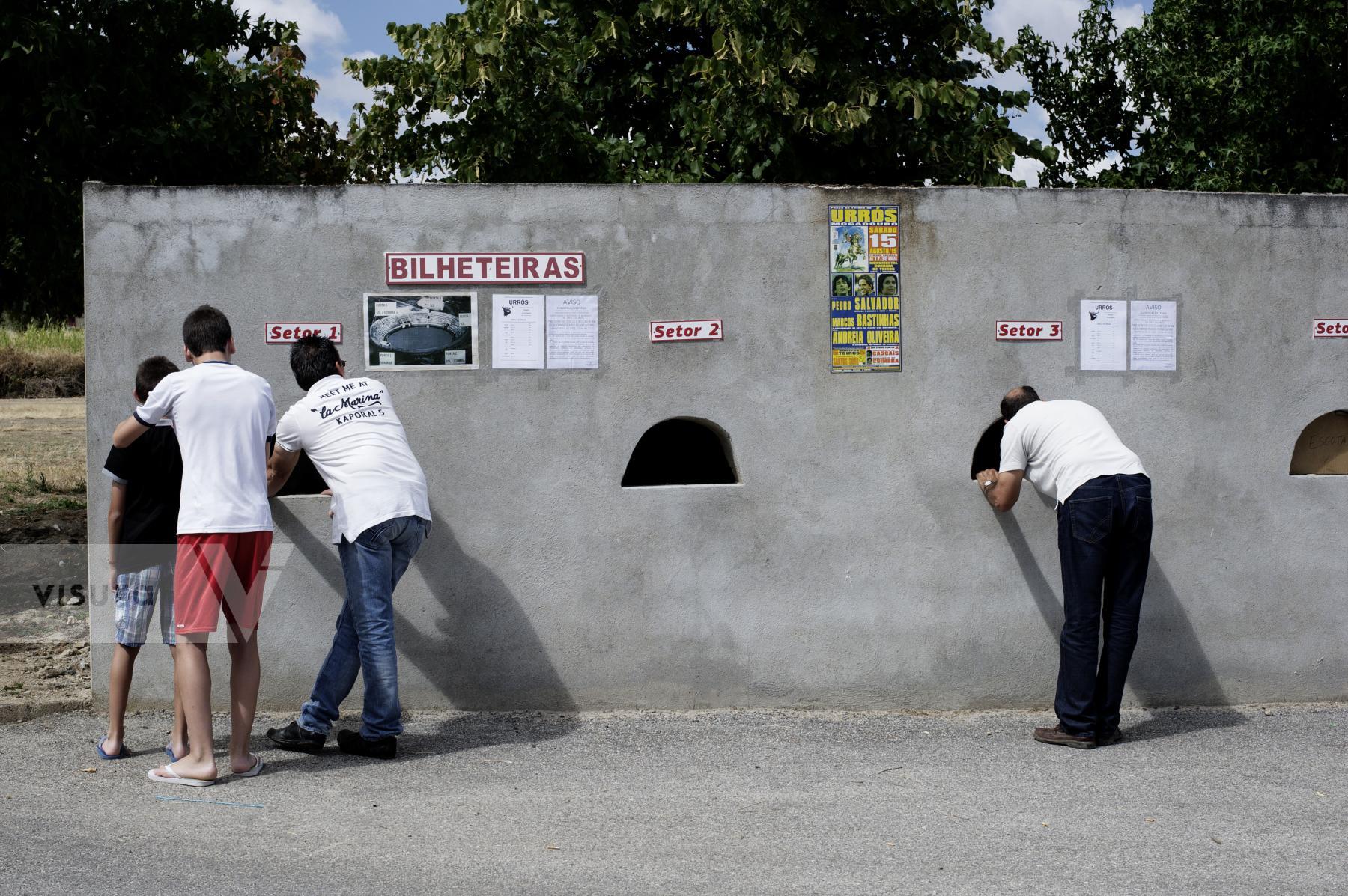
Urros. People buy tickets for the local corrida. A lot of small countryside villages organize only one corrida per year, that day the villages are full of people and is the most important day for small local shops. Urros Portugal
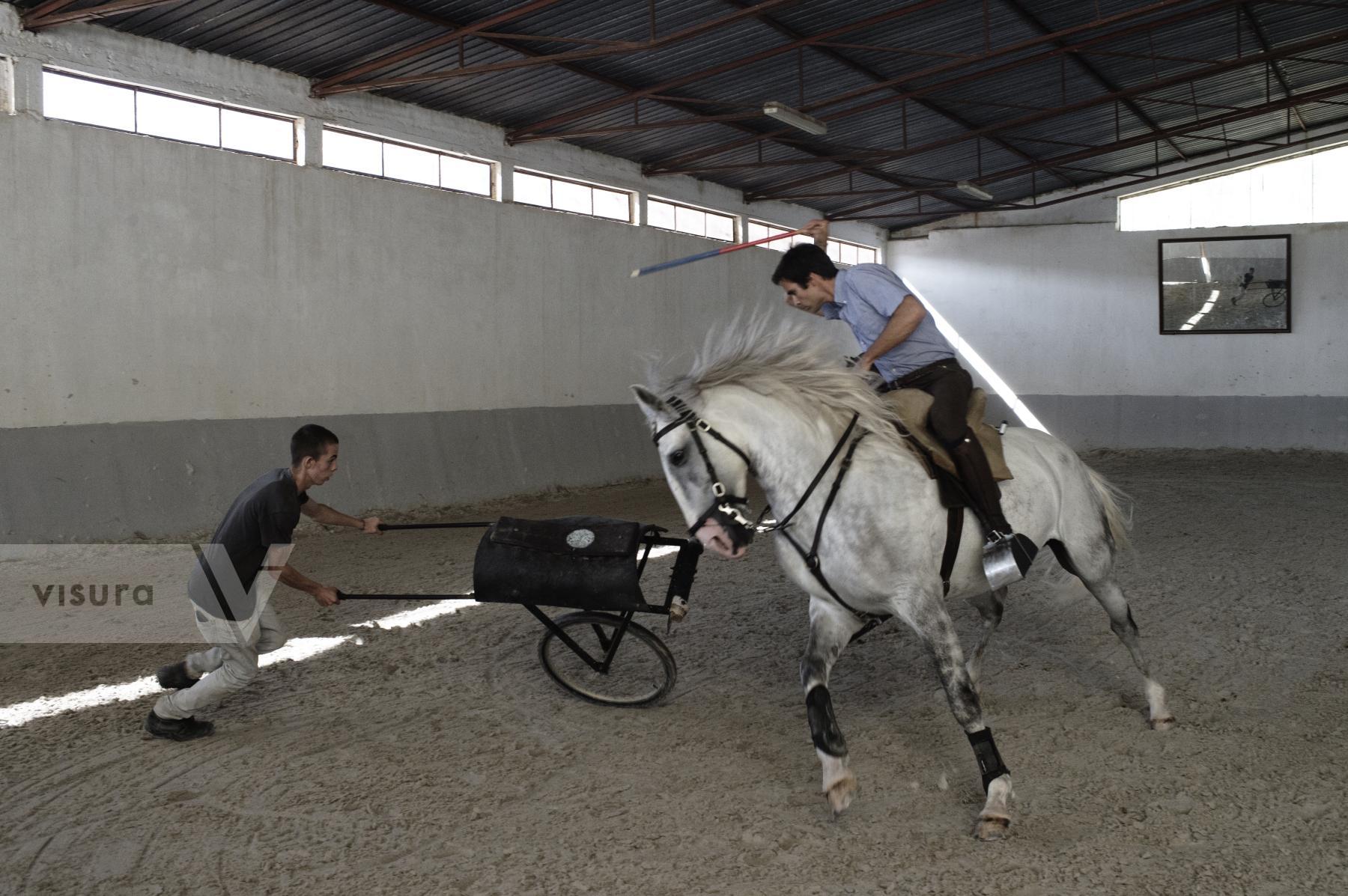
Coruche. One member of the team of the gorseman of João Ribeiro Telles Jr train a bullfight horse with a fake bull. The Telles are one of the eldest family of bullfight horseman in Portugal, João is the third generation of bullfight horseman. Coruche Portugal
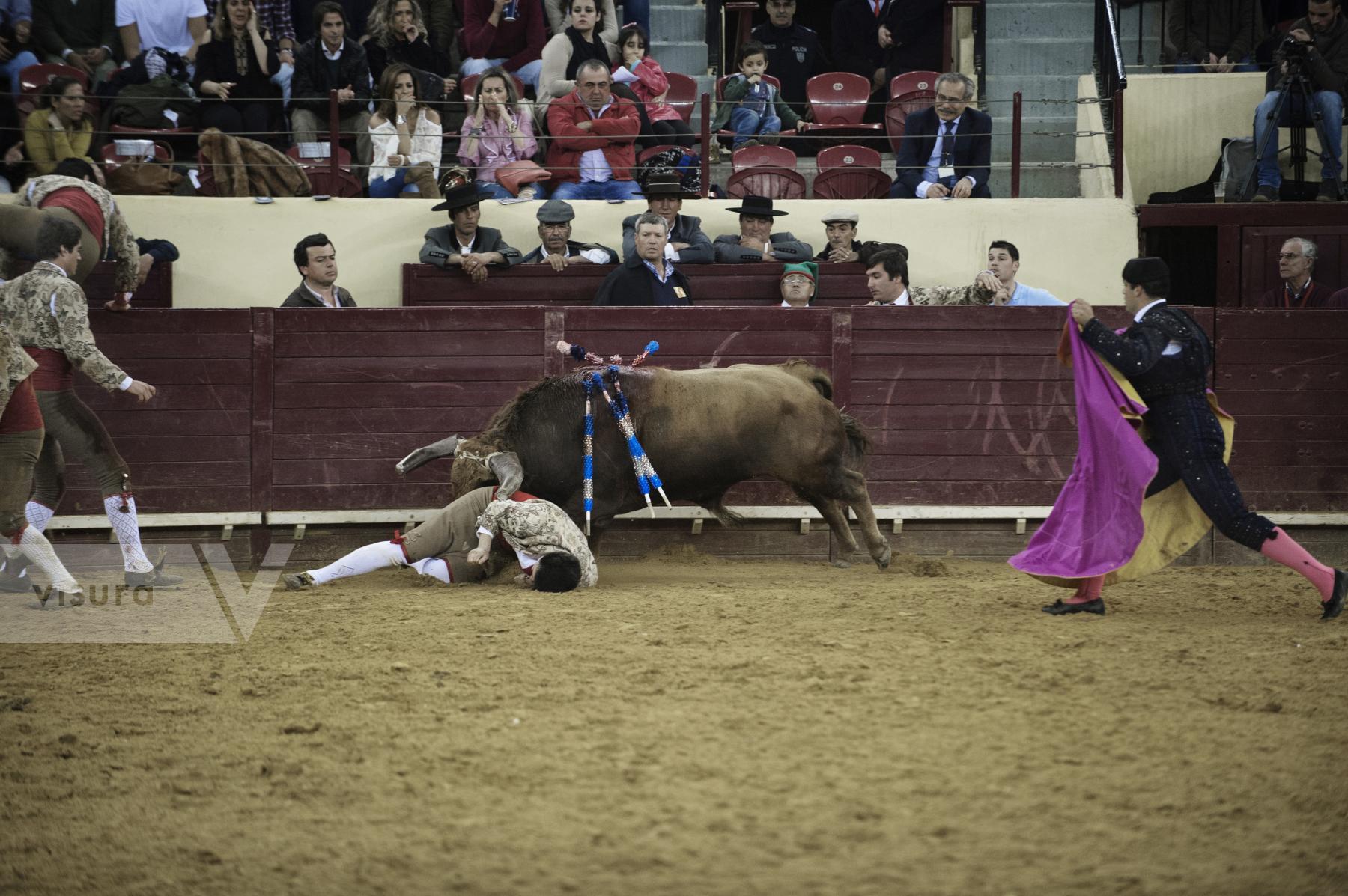
Lisbon. A corrida in Campo Pequeno, the bullfight arena of Lisbon. A pega (holding) of a group of forcados that went wrong. Most Portuguese bullfights are held in two phases: the spectacle of the cavaleiro, and the pega. In the cavaleiro, a horseman on a Portuguese Lusitano horse (specially trained for the show) fights the bull from horseback. The purpose of this part is to stab three or four bandeiras (small javelins) into the back of the bull. In the second stage, called the pega (“holding”), the forcados, a group of eight men, challenge the bull directly and without weapon of defence or protection. The front man provokes the bull into a charge to perform a pega de cara or pega de caras (“face grab”). The front man secures the animal's head and is quickly helped by his fellows who surround and secure the animal until the animal is subdued. Lisbon Portugal
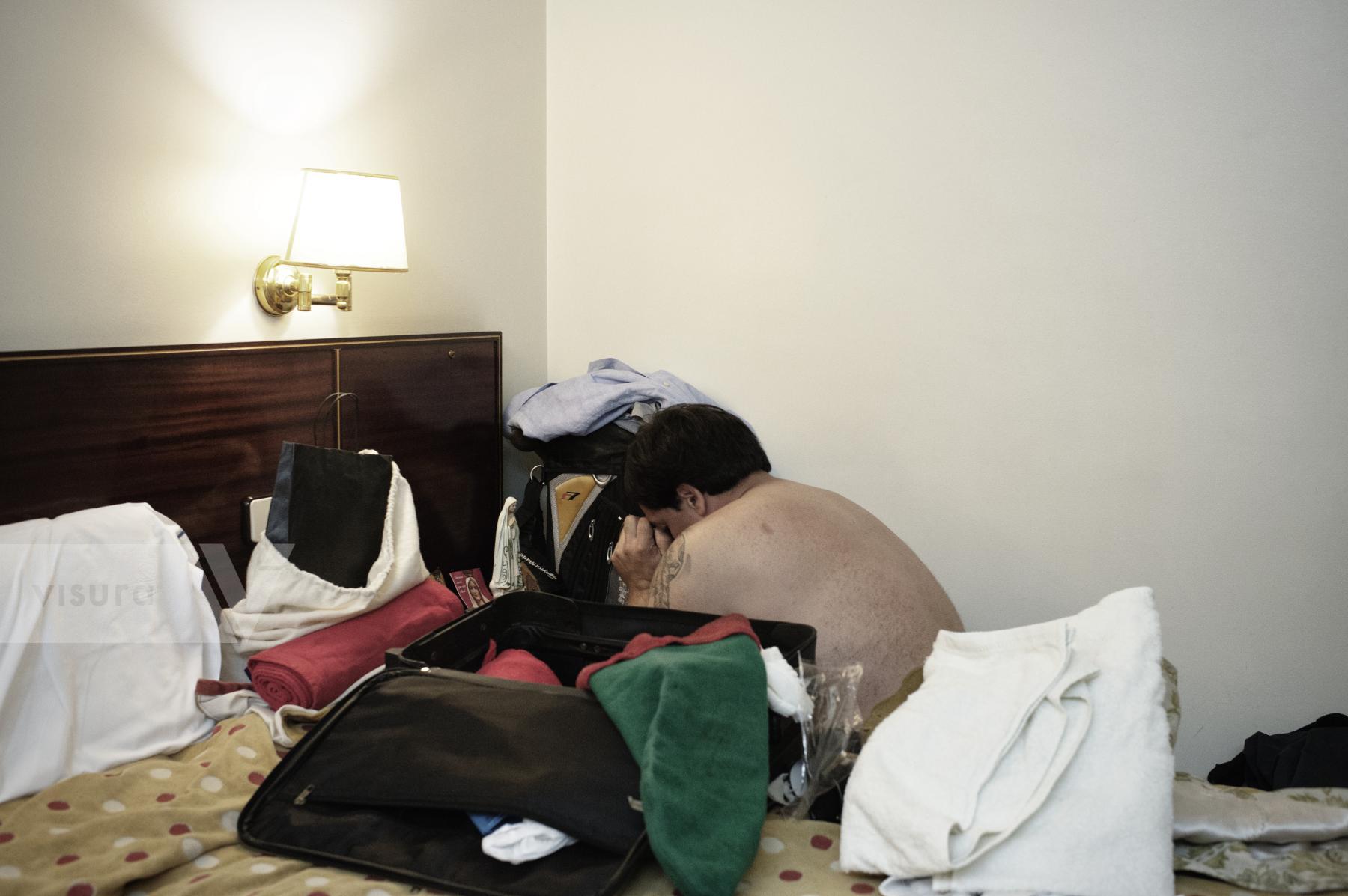
Lisbon. In an hotel in front of Campo Pequeno, the Lisbon bullfight arena, a forcado prays before the corrida. Religion is a main value of the bullfight world, most of the bullfight arenas have a chapel inside and most of the people involved in bullfight carry on them picture of Saints during the shows. The forcados are a group of eight men, challenge the bull directly and without weapon of defence or protection. The front man provokes the bull into a charge to perform a pega de cara or pega de caras (“face grab”). The front man secures the animal's head and is quickly helped by his fellows who surround and secure the animal until the animal is subdued. Lisbon Portugal
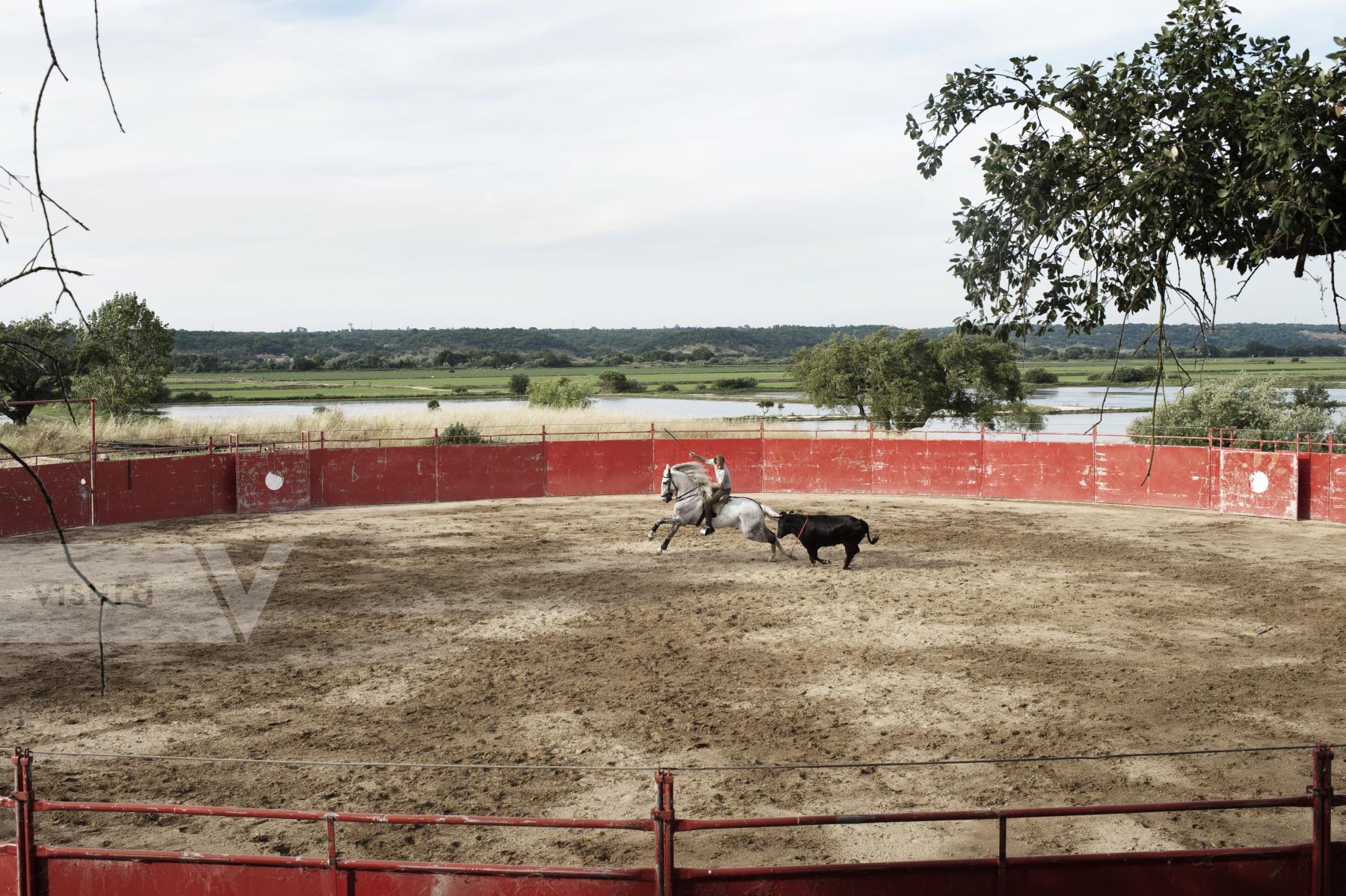
Coruche. The bullfight horseman João Ribero Telles trains in his personal arena with a veal. The Telles are one of the eldest family of bullfight horseman in Portugal, João is the third generation of bullfight horseman. Coruche Portugal
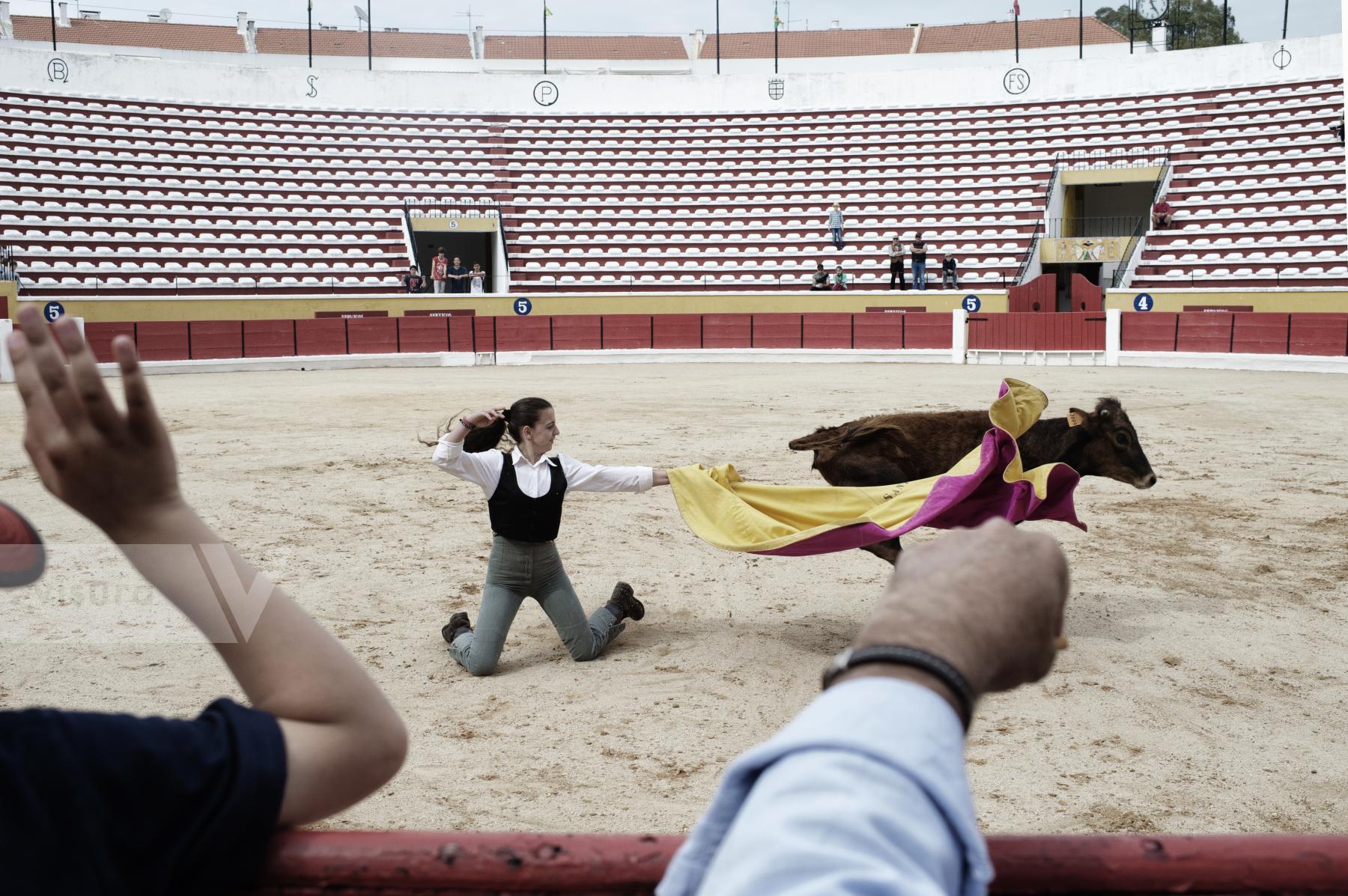
Moita. Paula Santos fighting with a veal during a open class of the bullfight school of Moita. Paula Santos started to bullfight at the ageof 5, now at 16 she is performing in Spain where the bullfighters can kill the bull. Moita Portugal
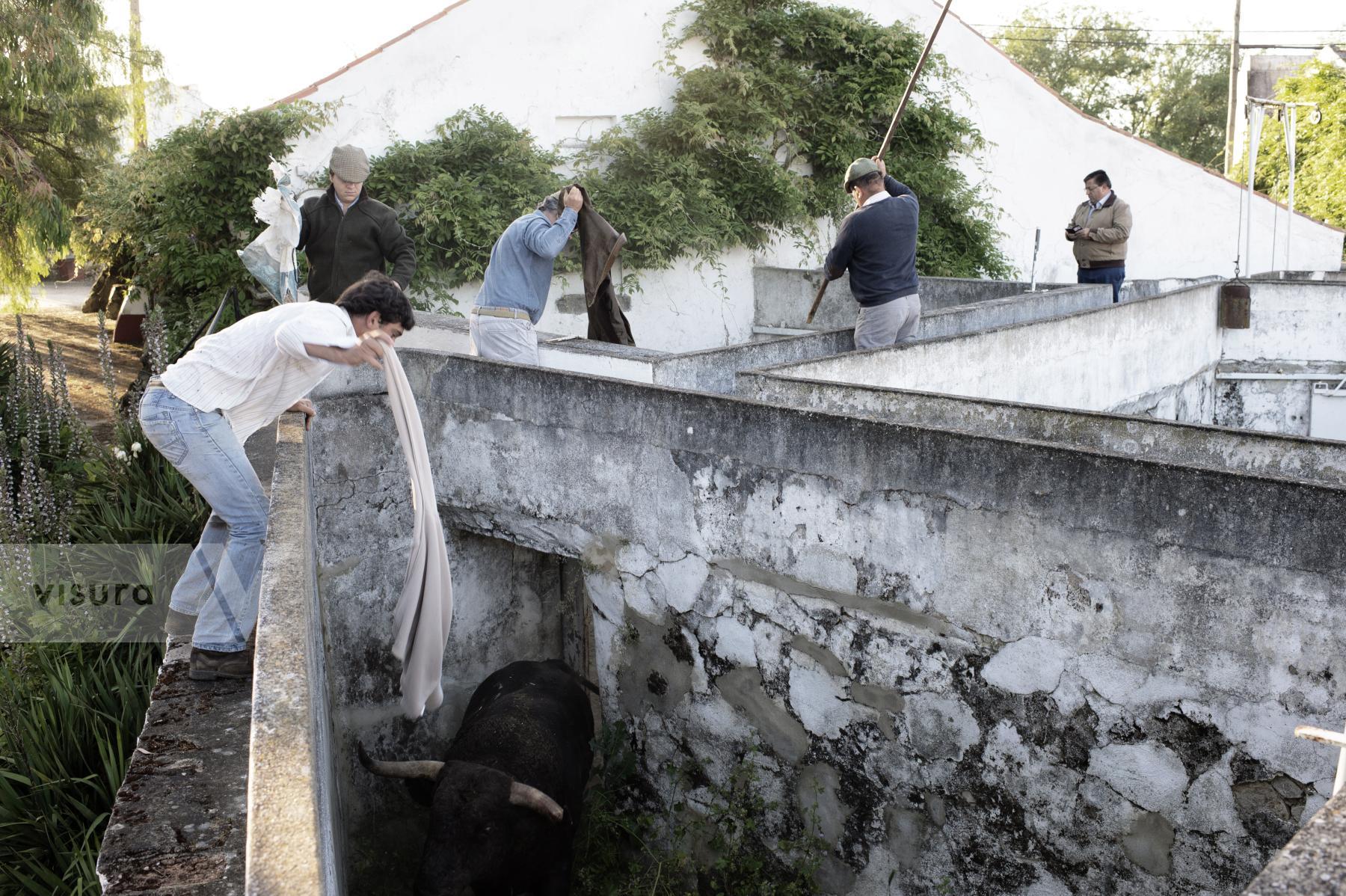
Montemor. Herdade do Pedrogão. Mr Veiga Teixera, owner of the herdade, his son, his farmers and the CEO of a bullfight arena separate the wild bulls selected for a show from the rest of the animal group using a maze. The herdades are mainly large rural estates still very often still owns by Portuguese nobility. Montemor Portugal

Malhada Alta. During a private party of the forcados of Santarem a group of young boy catch some cow that will be branded by fire. This activity help the owner of the cow to brand the animals and at the same time is a test for the boys that would like to enter in the forcados group. In these events young boys are introduced to bullfight showing their abilities to professionals. In the Portuguese corrida, forcados are a group of eight men, challenge the bull directly and without weapon of defence or protection. Malhada Alta Portugal
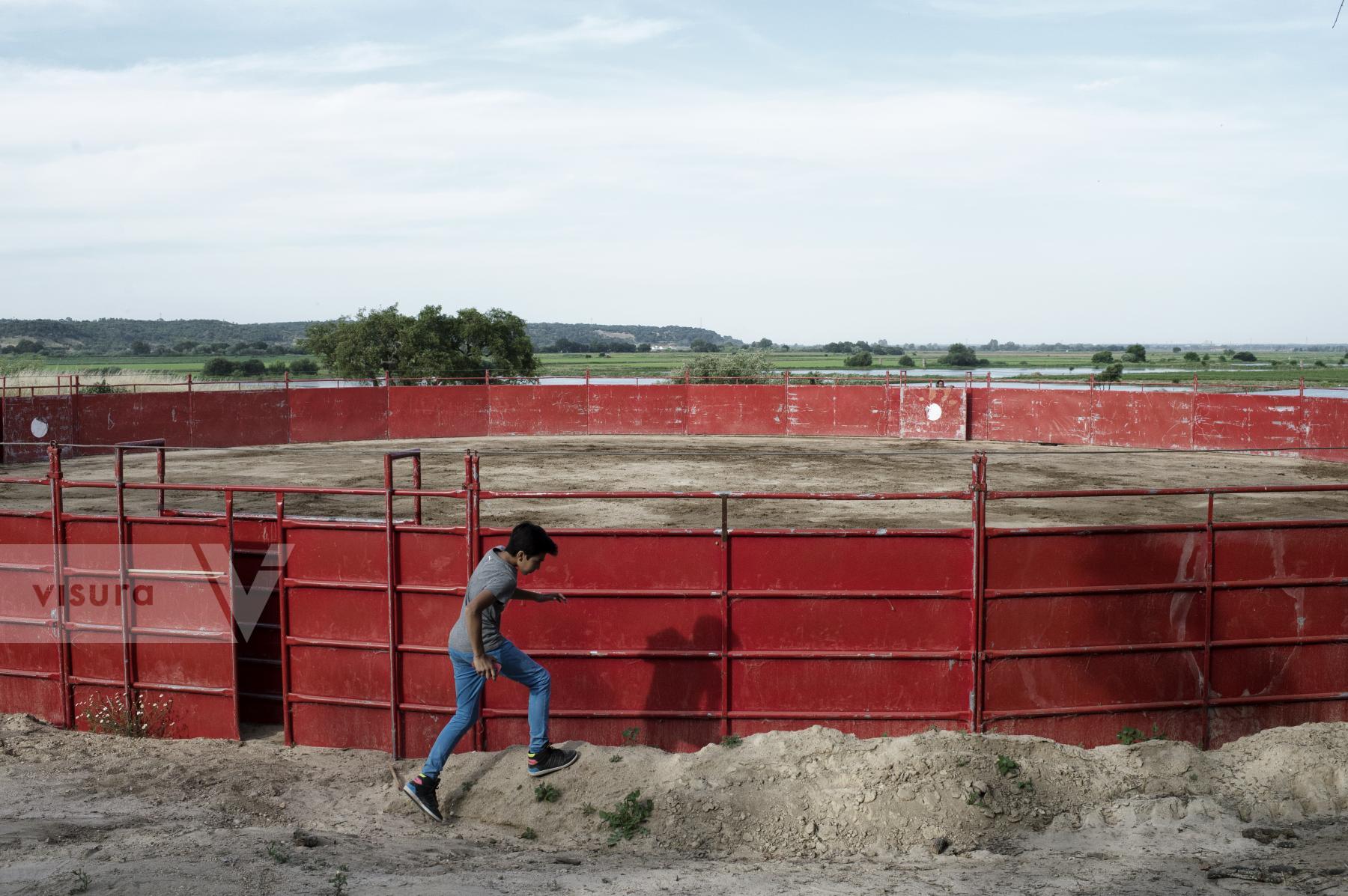
Coruche. The son of a bullfight horse trainer play around the private arena of the horseman João Ribeiro Telles. The horses used in portugal are generally from the Lusitano Race and are trained to the corridas until the age of 7 years. Coruche Portugal
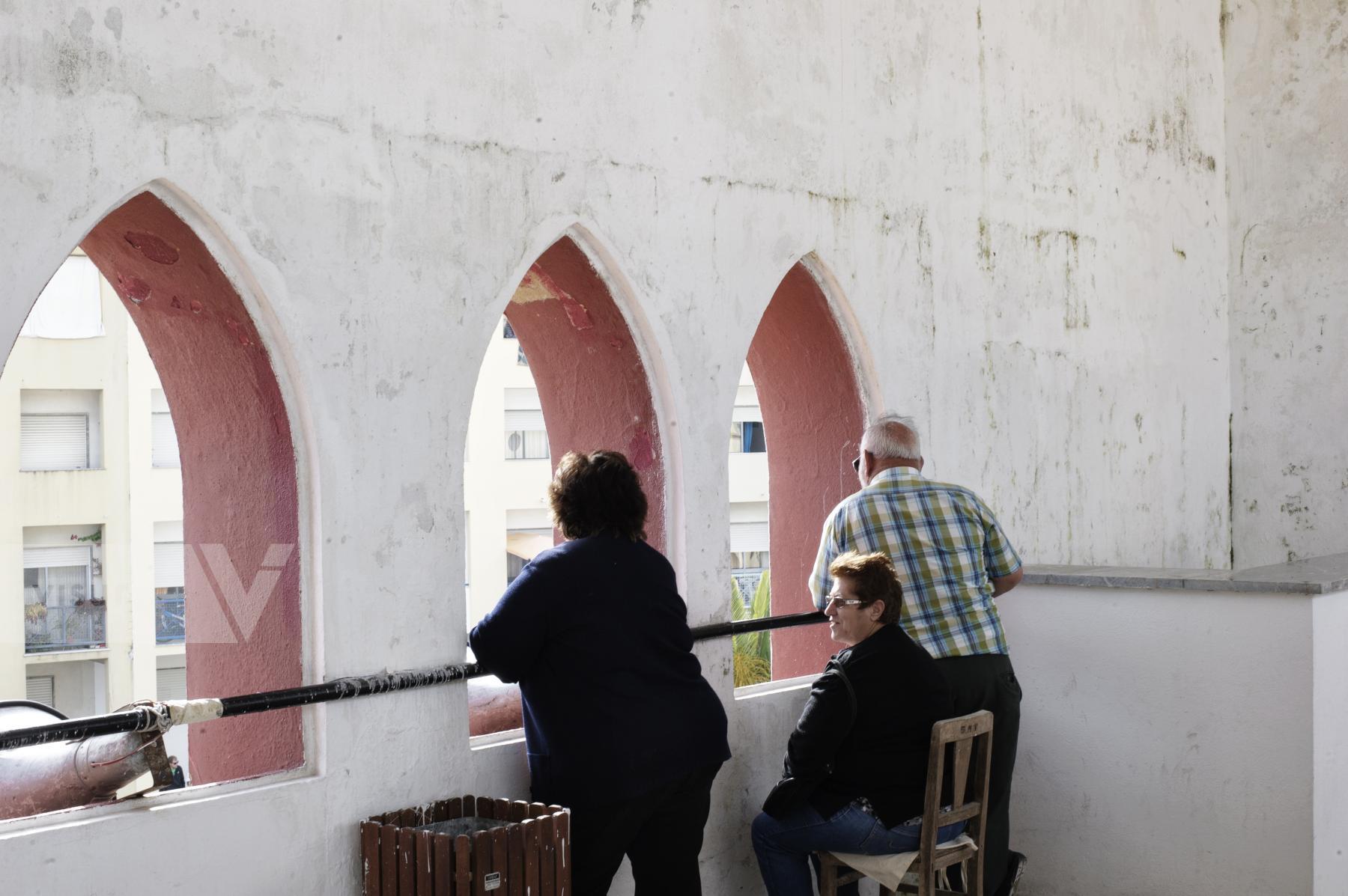
Moita. 3 people look a bull running from the bullfight arena. Moita Portugal
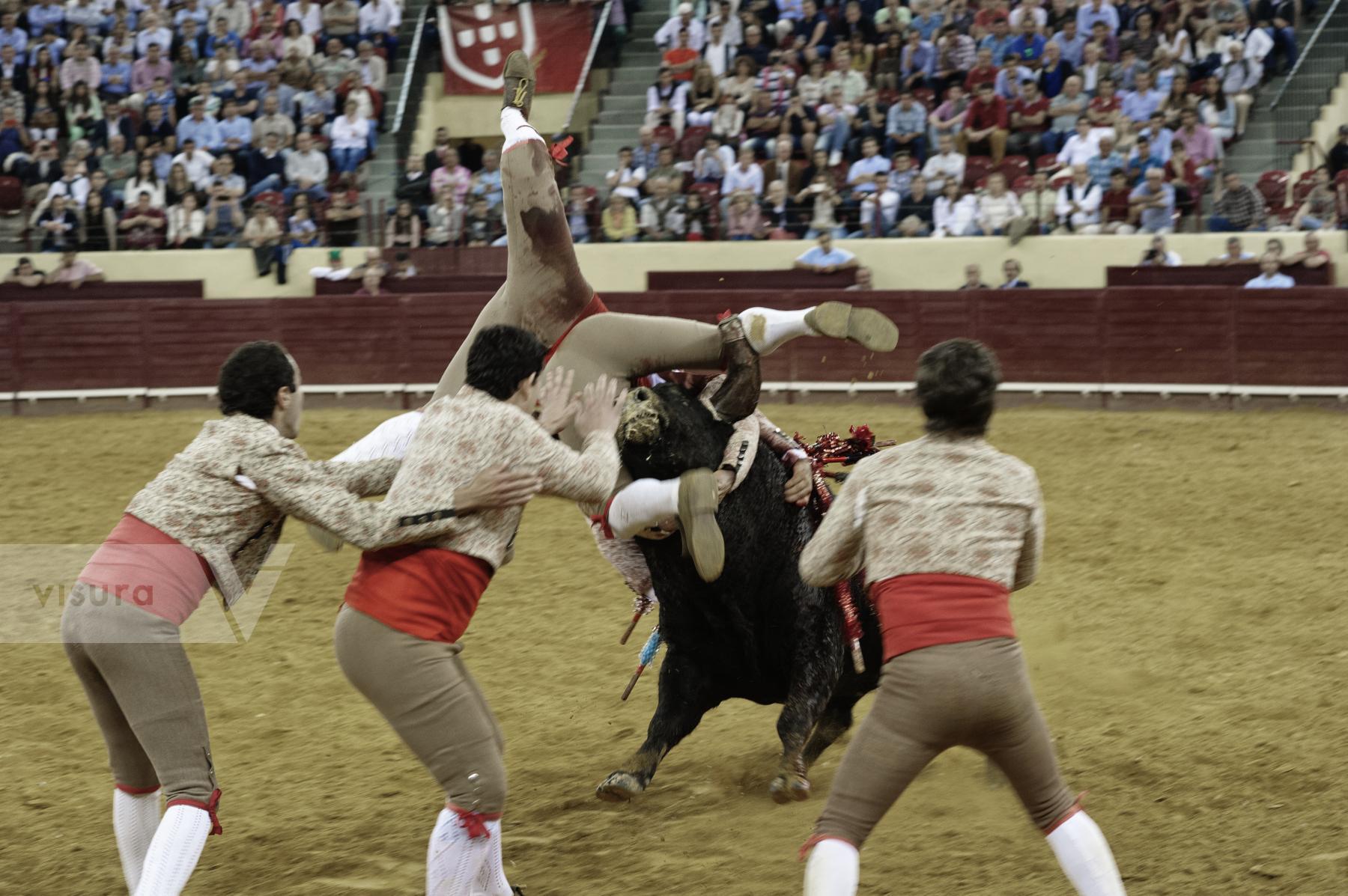
Lisbon. A corrida in Campo Pequeno, the bullfight arena of Lisbon. A pega (holding) of a group of forcados that went wrong. Most Portuguese bullfights are held in two phases: the spectacle of the cavaleiro, and the pega. In the cavaleiro, a horseman on a Portuguese Lusitano horse (specially trained for the show) fights the bull from horseback. The purpose of this part is to stab three or four bandeiras (small javelins) into the back of the bull. In the second stage, called the pega (“holding”), the forcados, a group of eight men, challenge the bull directly and without weapon of defence or protection. The front man provokes the bull into a charge to perform a pega de cara or pega de caras (“face grab”). The front man secures the animal's head and is quickly helped by his fellows who surround and secure the animal until the animal is subdued. Lisbon Portugal
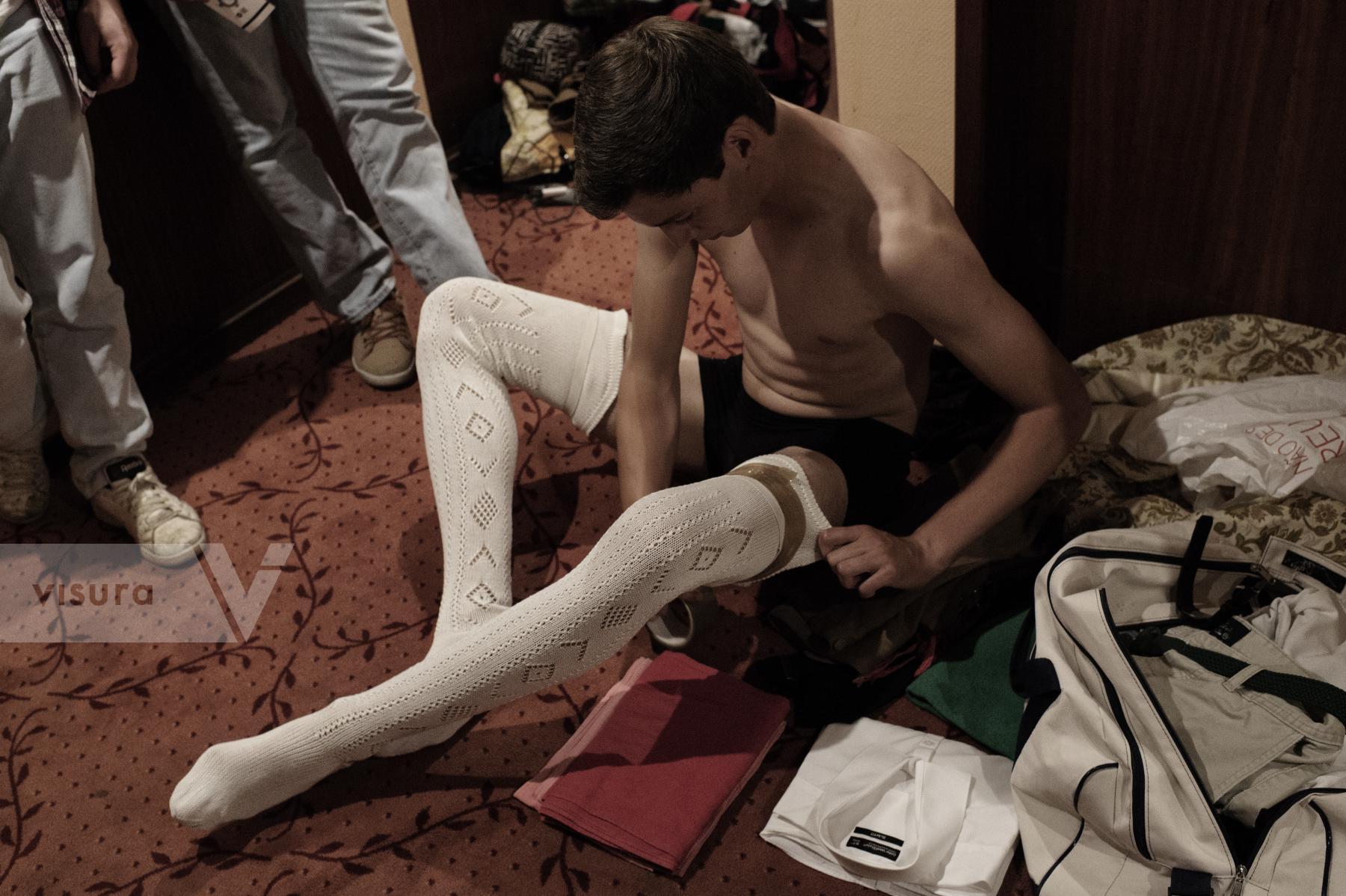
Lisbon. In a corridor of a hotel in Campo Pequeno a group of forcados get ready before a show. The forcados groups are composed by voluteers, the group receive around 600 euros per show that are used to pay the health insurance. Most Portuguese bullfights are held in two phases: the spectacle of the cavaleiro, and the pega. In the cavaleiro, a horseman on a Portuguese Lusitano horse (specially trained for the show) fights the bull from horseback. The purpose of this part is to stab three or four bandeiras (small javelins) into the back of the bull. In the second stage, called the pega (“holding”), the forcados, a group of eight men, challenge the bull directly and without weapon of defence or protection. The front man provokes the bull into a charge to perform a pega de cara or pega de caras (“face grab”). The front man secures the animal's head and is quickly helped by his fellows who surround and secure the animal until the animal is subdued. Lisbon Portugal
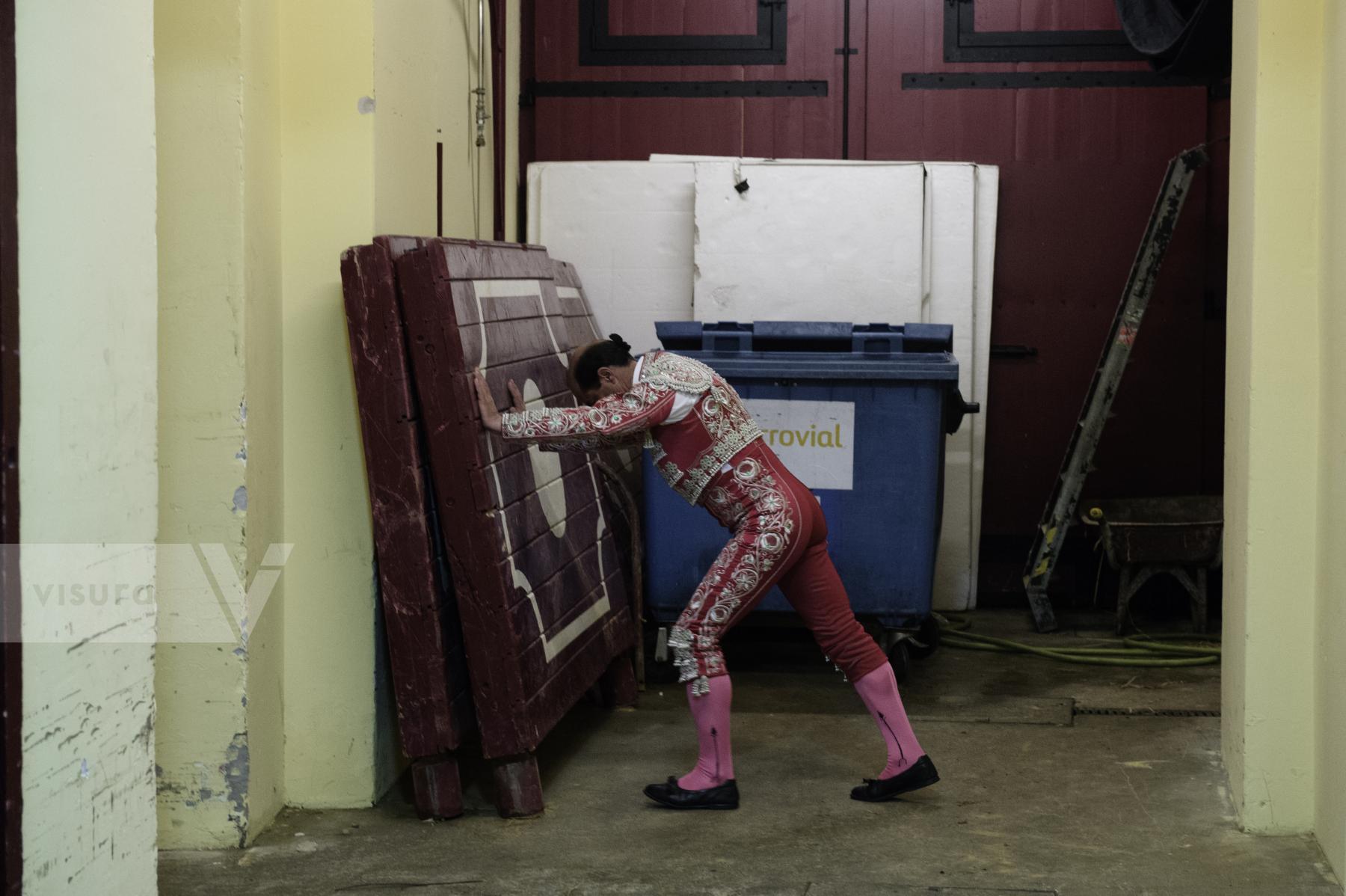
Lisboa. Campo Pequeno. A banderilheiros warms-up before the show. Bandarilheiros - These men are the matador's and/or cavaleiro's helpers in the arena. They are skillful and wear the suit of light as the matador, except not with the gold sequins. While in the arena, they are holding the gold/pink cape to distract or position the bull. Lisbon Portugal

Malhada Alta. People watch an informal corrida during the private party of the forcados of Santarem. Malhada Alta Portugal
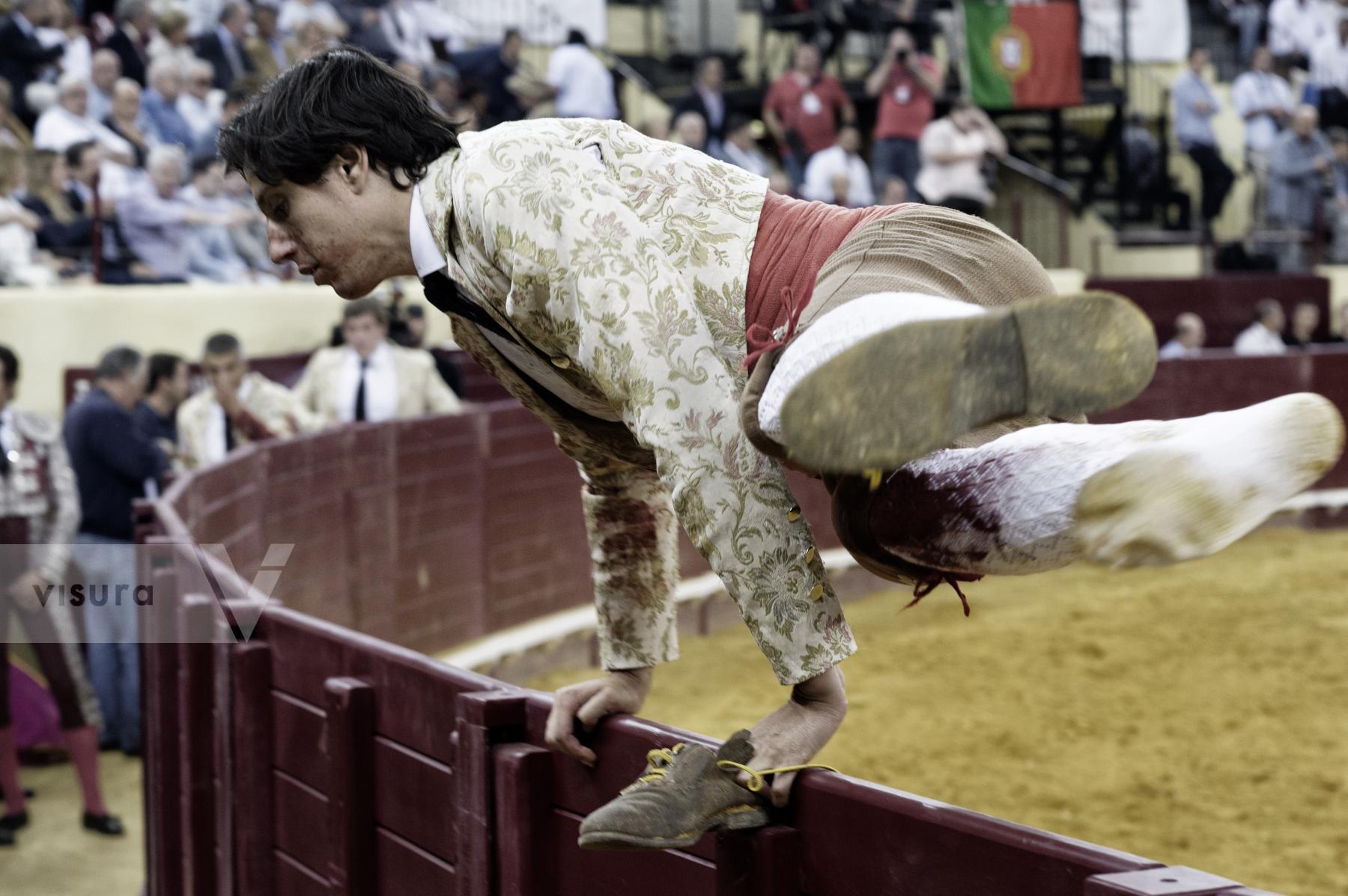
Lisbon. Campo Pequeno. The Chief of the Forcados of Alcochete jumps out from the arena after a bull holding. The forcados groups are composed by voluteers, the group receive around 600 euros per show that are used to pay the health insurance. Most Portuguese bullfights are held in two phases: the spectacle of the cavaleiro, and the pega. In the cavaleiro, a horseman on a Portuguese Lusitano horse (specially trained for the show) fights the bull from horseback. The purpose of this part is to stab three or four bandeiras (small javelins) into the back of the bull. In the second stage, called the pega (“holding”), the forcados, a group of eight men, challenge the bull directly and without weapon of defence or protection. The front man provokes the bull into a charge to perform a pega de cara or pega de caras (“face grab”). The front man secures the animal's head and is quickly helped by his fellows who surround and secure the animal until the animal is subdued. Portugal
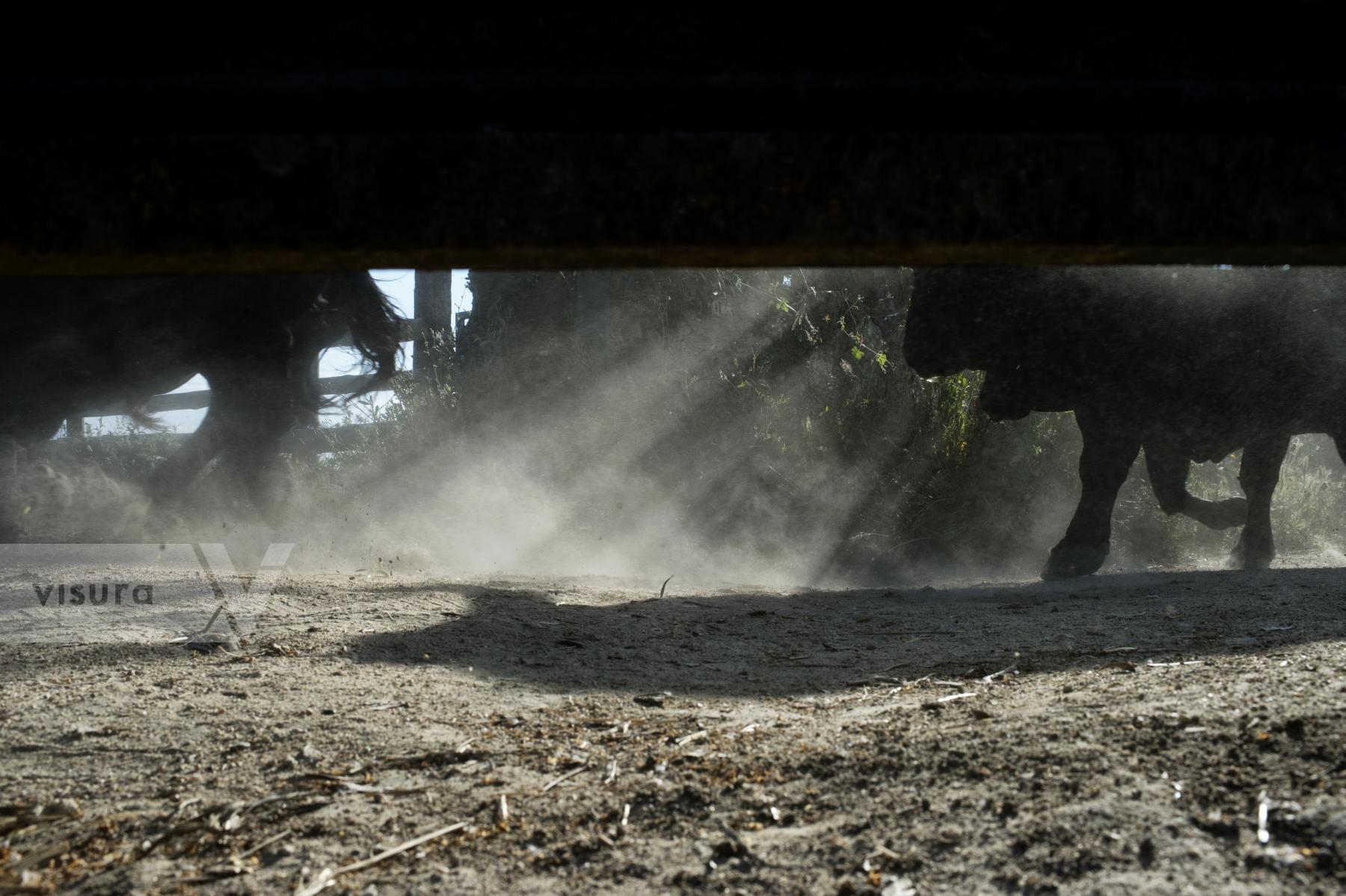
Montemor. Herdade do Pedrogão. A group of wild bulls enter in a paddock before the arrival of the transport that will carries them to the bullfight arena. Montemor Portugal
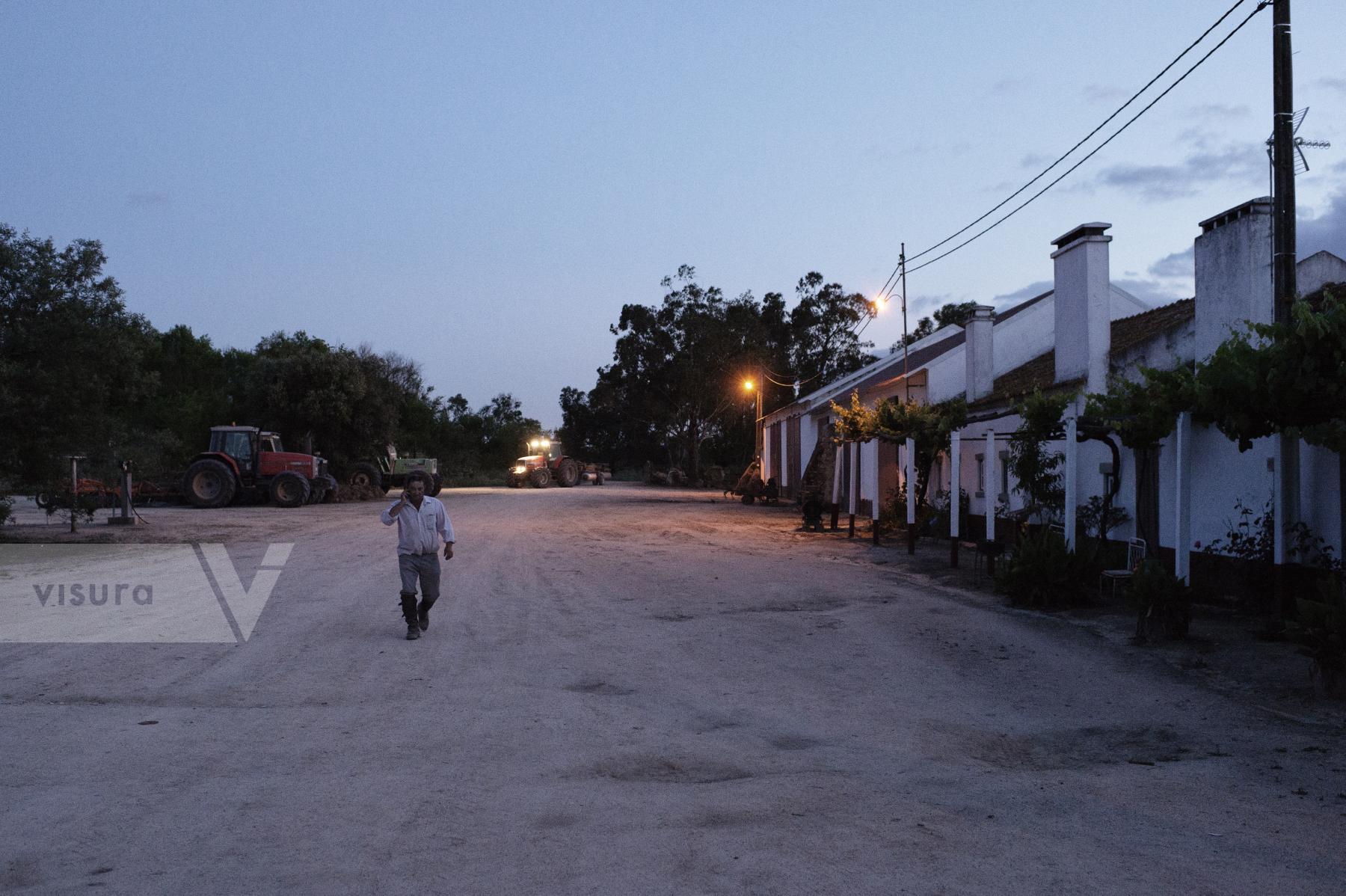
Montemor. Herdade do Pedrogão. The farmer of the Herdade go back home after a day of work. The herdades are mainly large rural estates still very often still owns by Portuguese nobility. Montemor Portugal

Moita. A student of the bullfight school stand in front of the Arena. The bullfight school of Moita count around 30 student of different ages. Moita Portugal
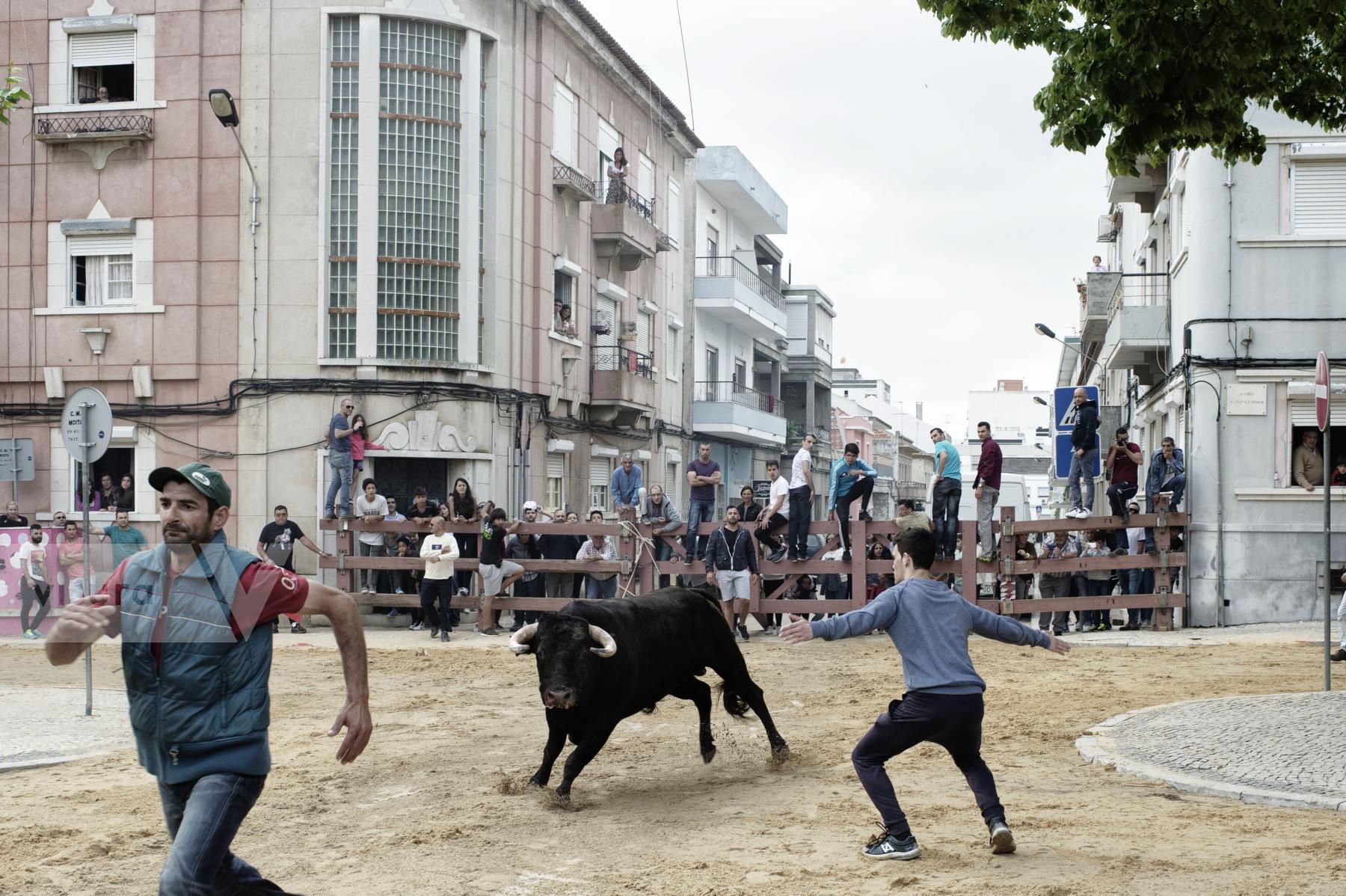
Moita. Running of the bulls. In a running of the bulls several animal are loose in the street and everybody can challenge them. Moita Portugal

Lisbon. Campo Pequeno. The owner of the bulls and his farmer assist at the veterinarian examination and to the forcados evaluation of the bulls. Lisbon Portugal

Montemor. Herdade do Perdigão. The room where the bullfighters sleed and rest when the owner of the Herdade organizes informal and private corridas. Religion is a main value of the bullfight world, most of the bullfight arenas have a chapel inside and most of the people involved in bullfight carry on them picture of Saints during the shows. Montemor Portugal

Lisbon. Campo Pequeno. Bullfighters horseman warm up their horses before the show in a private part of the arena Portugal

Lisbon. Campo Pequeno. A bull just arrived at the Lisbon bullfight arena is examined by the state veterinarian. Lisbon Portugal

Malhada Alta. An amateur bullfighter challenge a veal in a open field. In the private parties organized by forcados, young boys are introduced to bullfight showing their abilities to professionals. Malhada Alta Portugal
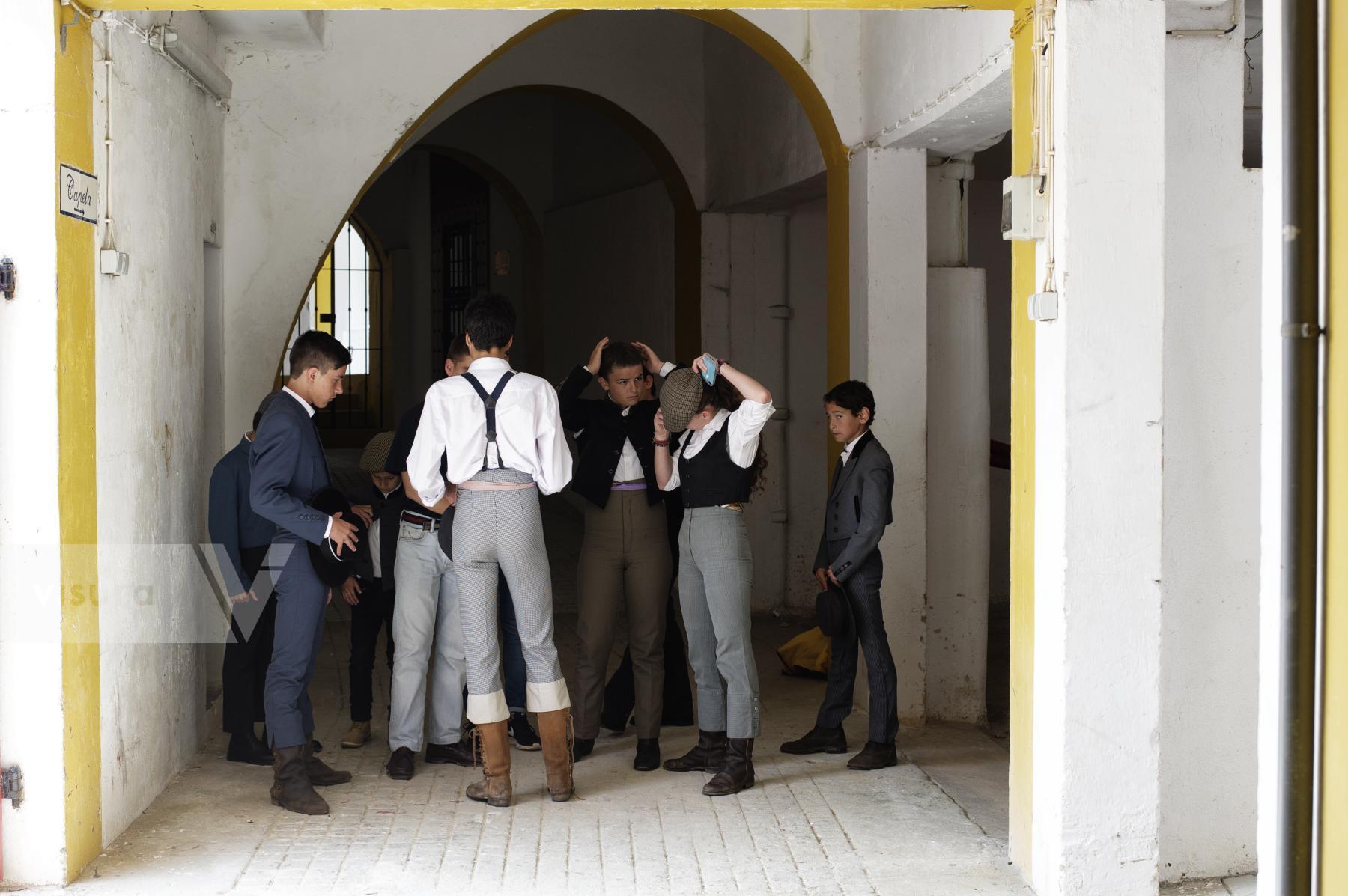
Moita. Young students of the bullfight school team up before an open class where they will be challenge veals. Moita Portugal
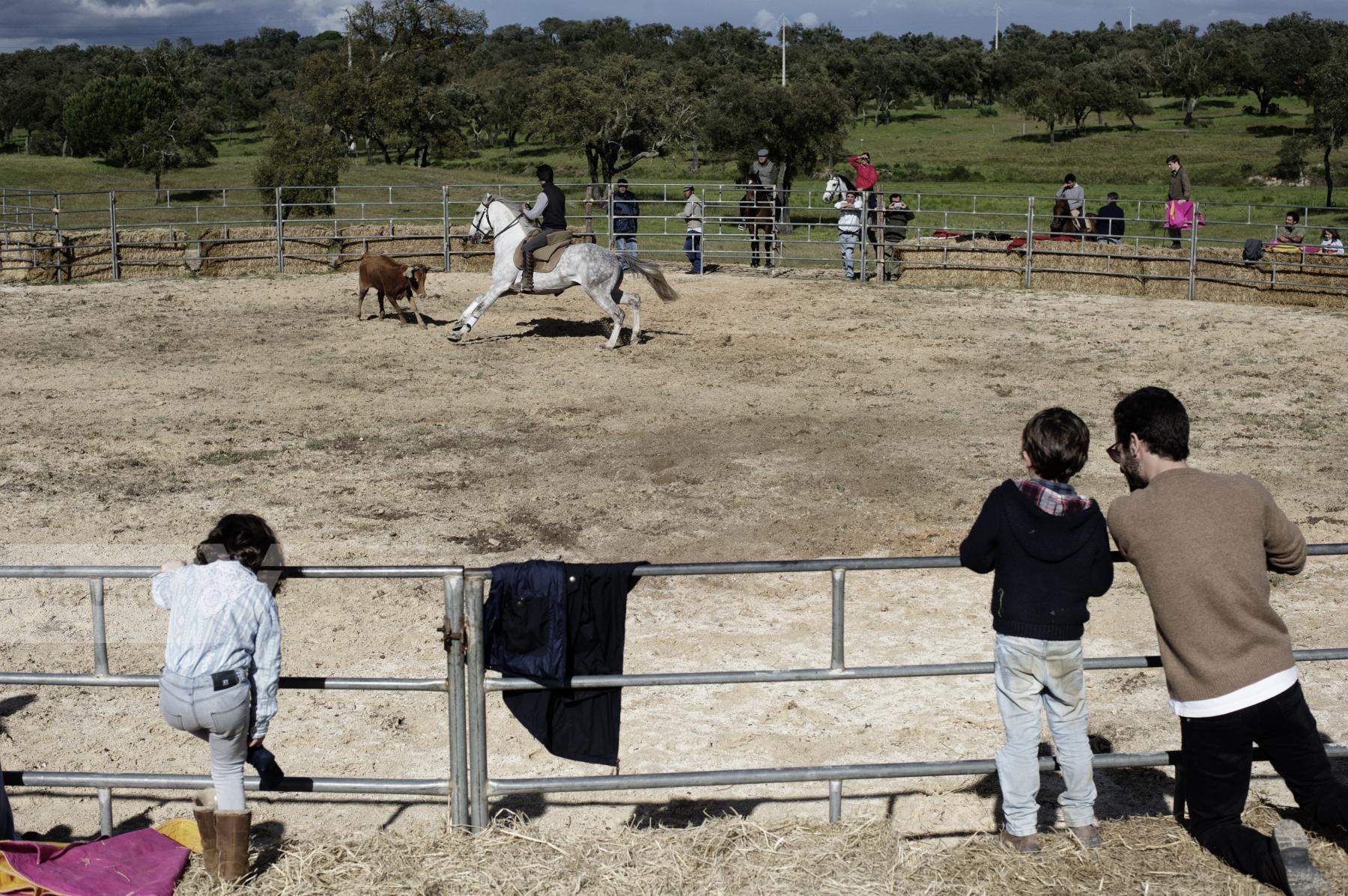
Malhada Alta. During a private party organized by the Forcados of Santarem, two children are introduced to the corrida. Normally the new bullfighters belong to families of bullfighters and the passion for this culture is passed from the elder generation to the younger one. Children are educated to bullfight from a young age, when they are around 5 years old. Malhada Alta Portugal
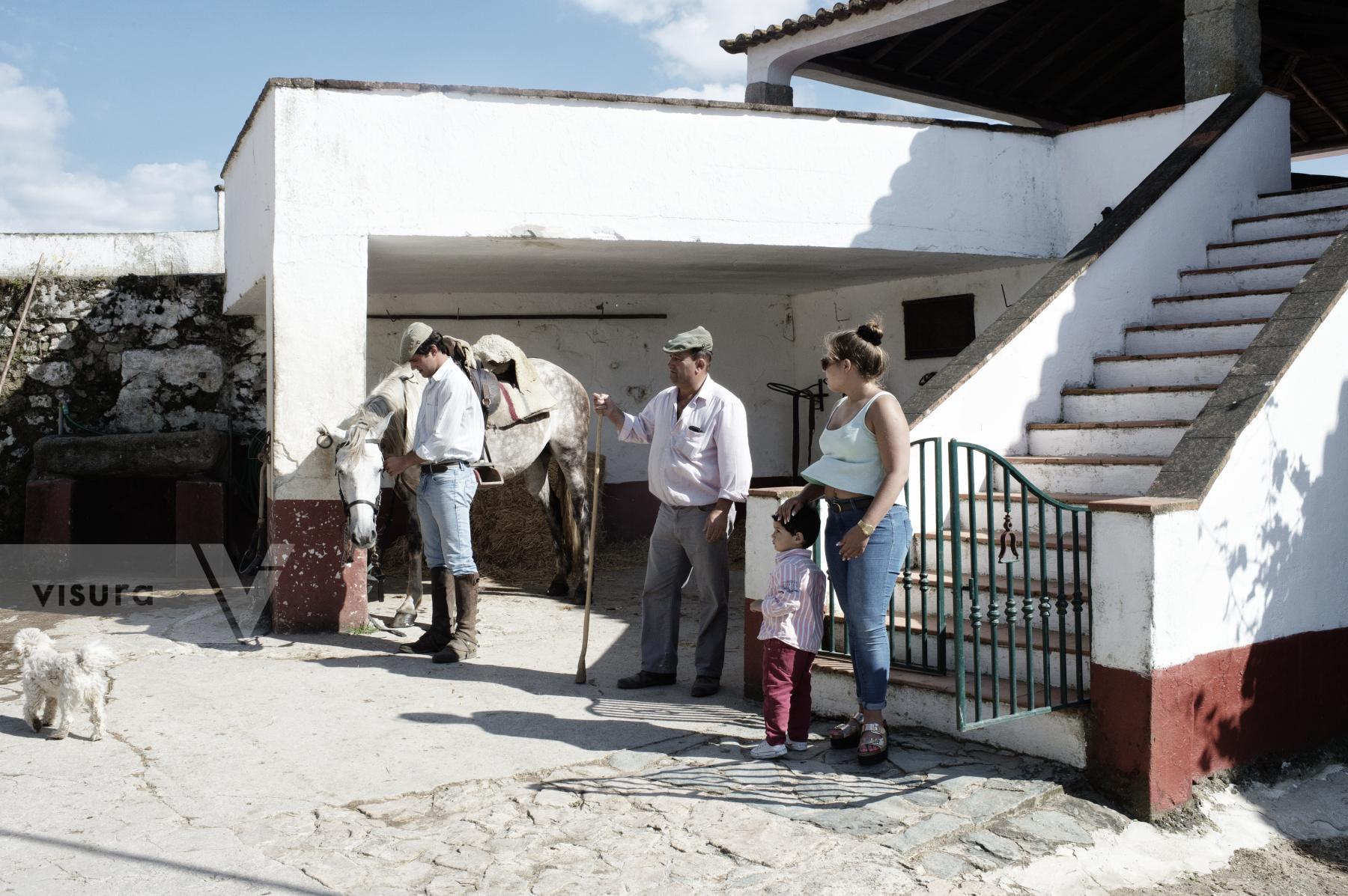
Montemor. Herdade do Perdigão. The family of a farmer wait for the owner of the Herdade that is coming to follow the procedures necessary to transport wild bulls from the Herdade to the bullfight arena. Montemor Portugal

Lisbon. Campo Pequeno. In a hotel room in front of the Lisbon bullfight arena forcados from Alcochete hags each other to find the courage for the bullfight show. The forcados, a group of eight men, challenge the bull directly and without weapon of defence or protection. The front man provokes the bull into a charge to perform a pega de cara or pega de caras (“face grab”). The front man secures the animal's head and is quickly helped by his fellows who surround and secure the animal until the animal is subdued. he forcados groups are composed by voluteers, the group receive around 600 euros per show that are used to pay the health insurance. Lisbon Portugal
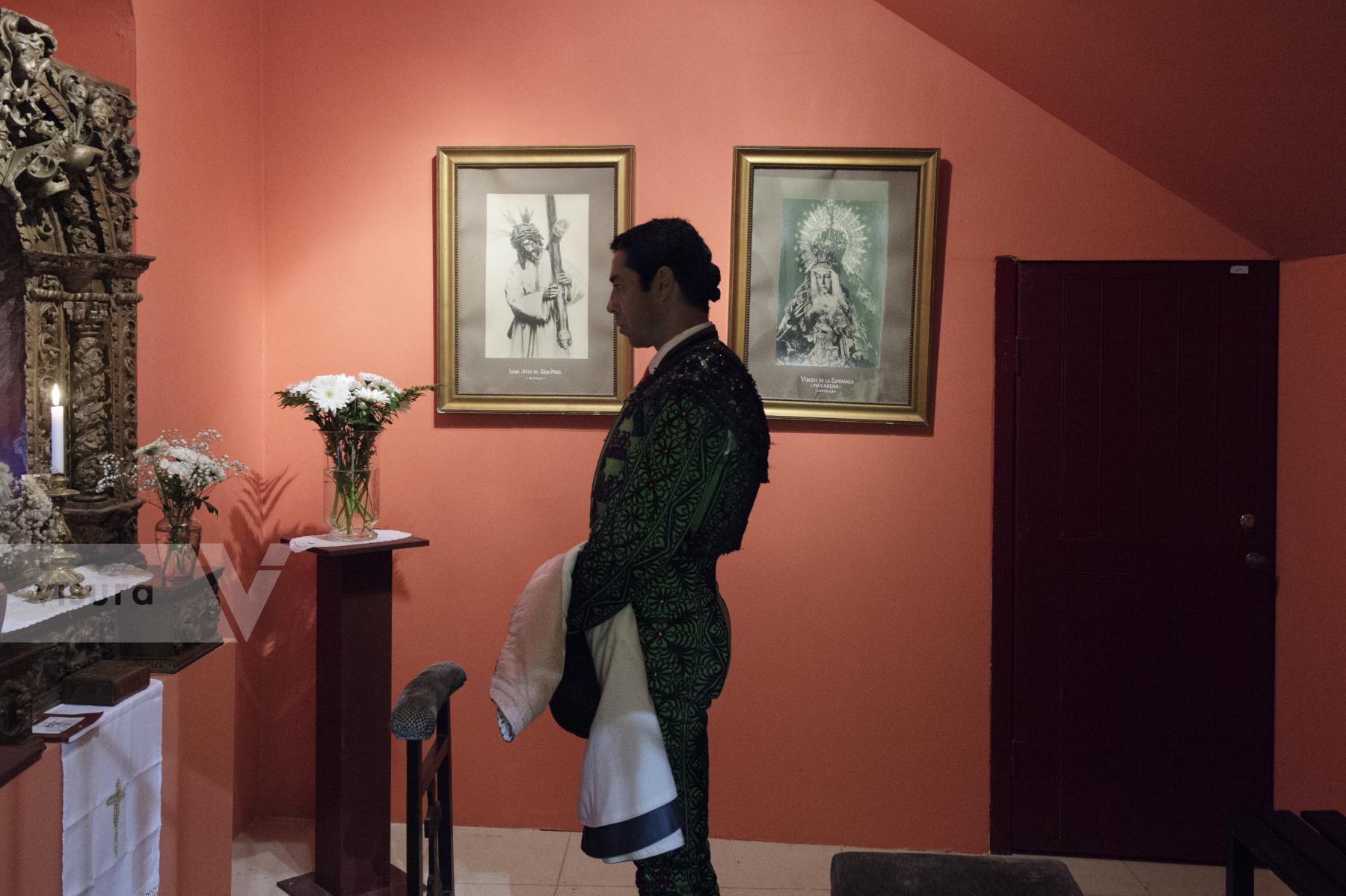
Lisbon. Campo Pequeno. Mr Nuno Oliveira, bandarilheiro, pray in the Lisbon bullfight arena chapel before facing the bulls. The Bandarilheiros are the matador's and/or cavaleiro's helpers in the arena. They are skillful and wear the suit of light as the matador, except not with the gold sequins. While in the arena, they are holding the gold/pink cape to distract or position the bull. Lisbon Portugal
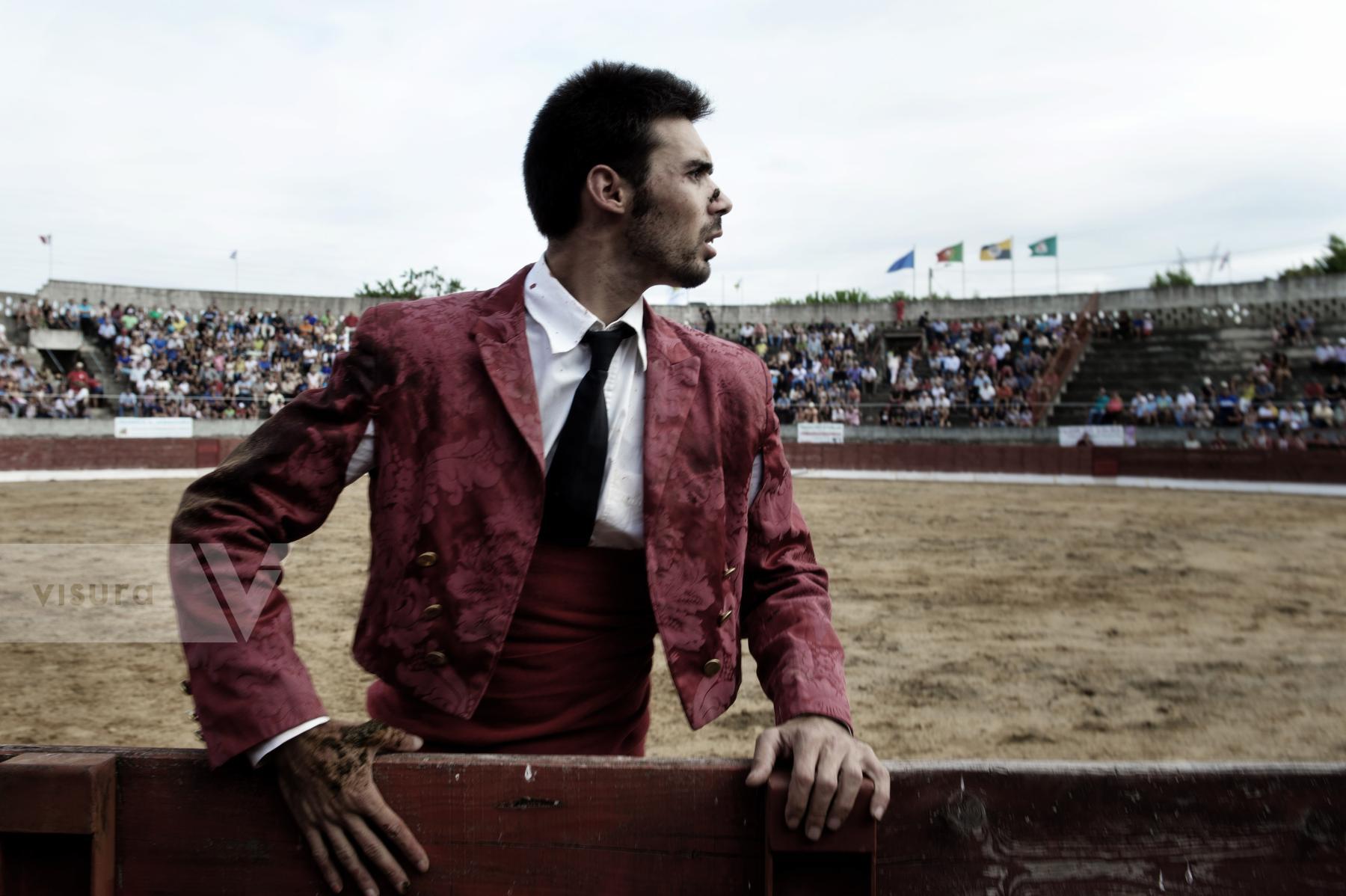
Urros. A member of the forcados of Cascais leave the bullfight arena after a Pega (holding) of a bull. The forcados, a group of eight men, challenge the bull directly and without weapon of defence or protection. The front man provokes the bull into a charge to perform a pega de cara or pega de caras (“face grab”). The front man secures the animal's head and is quickly helped by his fellows who surround and secure the animal until the animal is subdued. he forcados groups are composed by voluteers, the group receive around 600 euros per show that are used to pay the health insurance. Urros Portugal

Montalegre. Two bulls challenge each other during the Pega de Bois champioship. The Pega de Bois consist in a fight between two bulls of Barrosã race. the two animal fight each other until one is submit. Normally the fight doesn't injure the animals. Montalegre Portugal
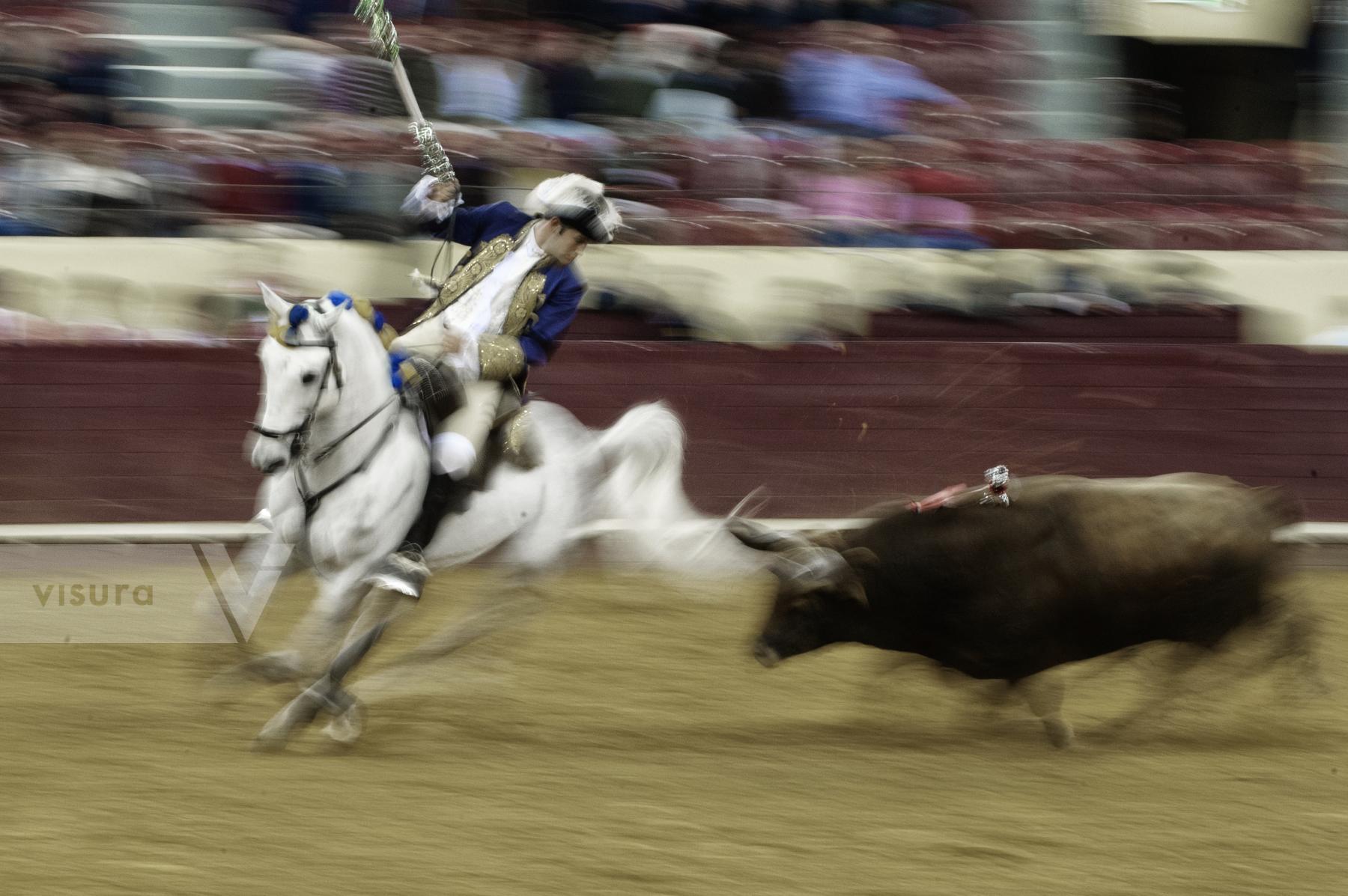
Lisbon. Campo Pequeno. A moment during a Portuguese bullfight. Most Portuguese bullfights are held in two phases: the spectacle of the cavaleiro, and the pega. In the cavaleiro, a horseman on a Portuguese Lusitano horse (specially trained for the show) fights the bull from horseback. The purpose of this part is to stab three or four bandeiras (small javelins) into the back of the bull. In the second stage, called the pega (“holding”), the forcados, a group of eight men, challenge the bull directly and without weapon of defence or protection. The front man provokes the bull into a charge to perform a pega de cara or pega de caras (“face grab”). The front man secures the animal's head and is quickly helped by his fellows who surround and secure the animal until the animal is subdued. The killing of the bull does not take place in front of the public; eventually, a professional butcher kills the animal after the show, but it can happen that, after an exceptional performance, the bulls are healed, released to pasture and used for breeding until they die. Lisbon Portugal
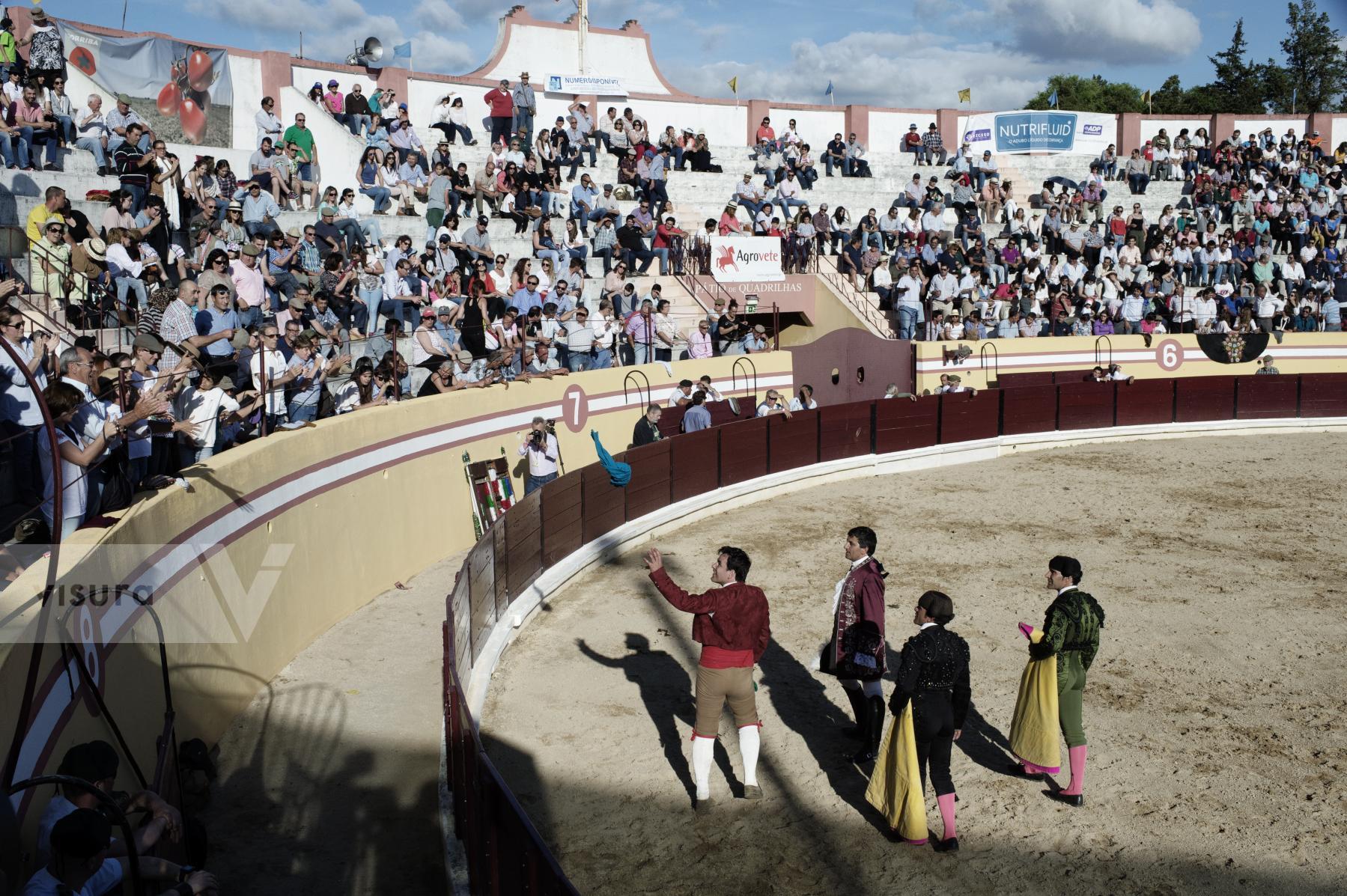
Salvaterra dos Magos. Forcados, Bandarilheiros and horseman thanks the pubblic after a bullfight show. the price of the ticket to attend a bullfight is between 10 euros to 75 euros. Most Portuguese bullfights are held in two phases: the spectacle of the cavaleiro, and the pega. In the cavaleiro, a horseman on a Portuguese Lusitano horse (specially trained for the show) fights the bull from horseback. The purpose of this part is to stab three or four bandeiras (small javelins) into the back of the bull. In the second stage, called the pega (“holding”), the forcados, a group of eight men, challenge the bull directly and without weapon of defence or protection. The front man provokes the bull into a charge to perform a pega de cara or pega de caras (“face grab”). The front man secures the animal's head and is quickly helped by his fellows who surround and secure the animal until the animal is subdued. Salvaterra dos Magos Portugal





































